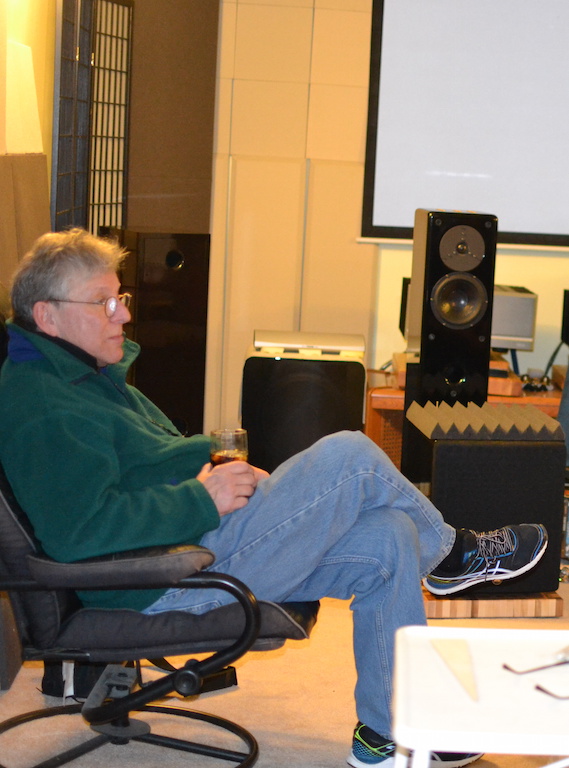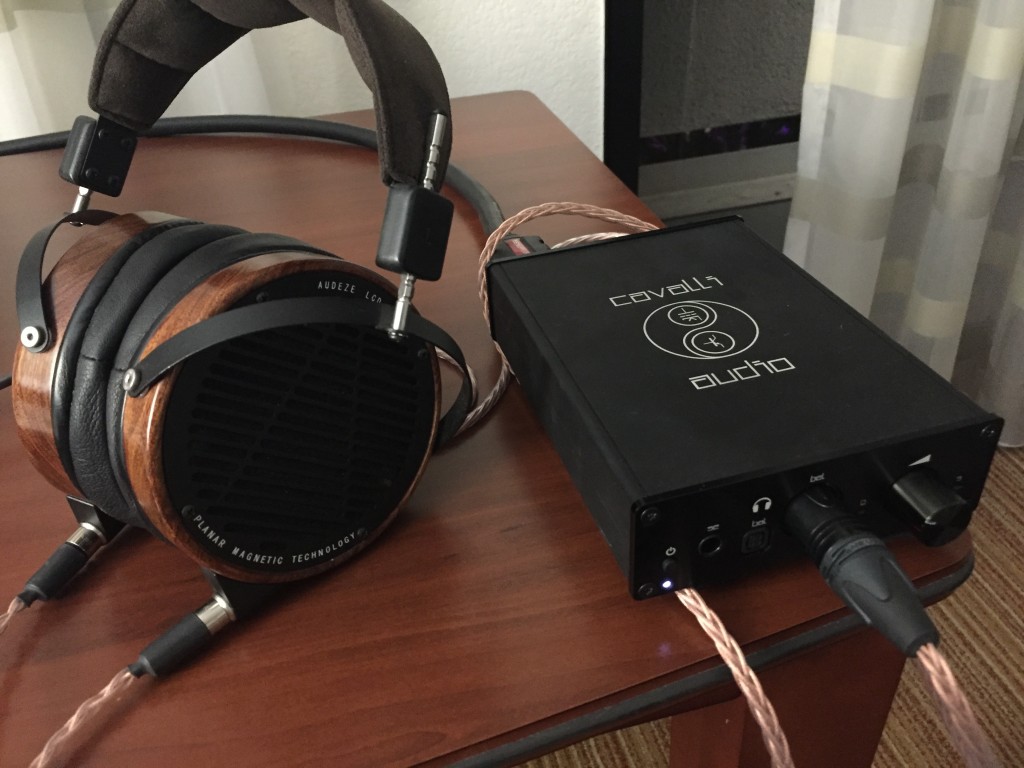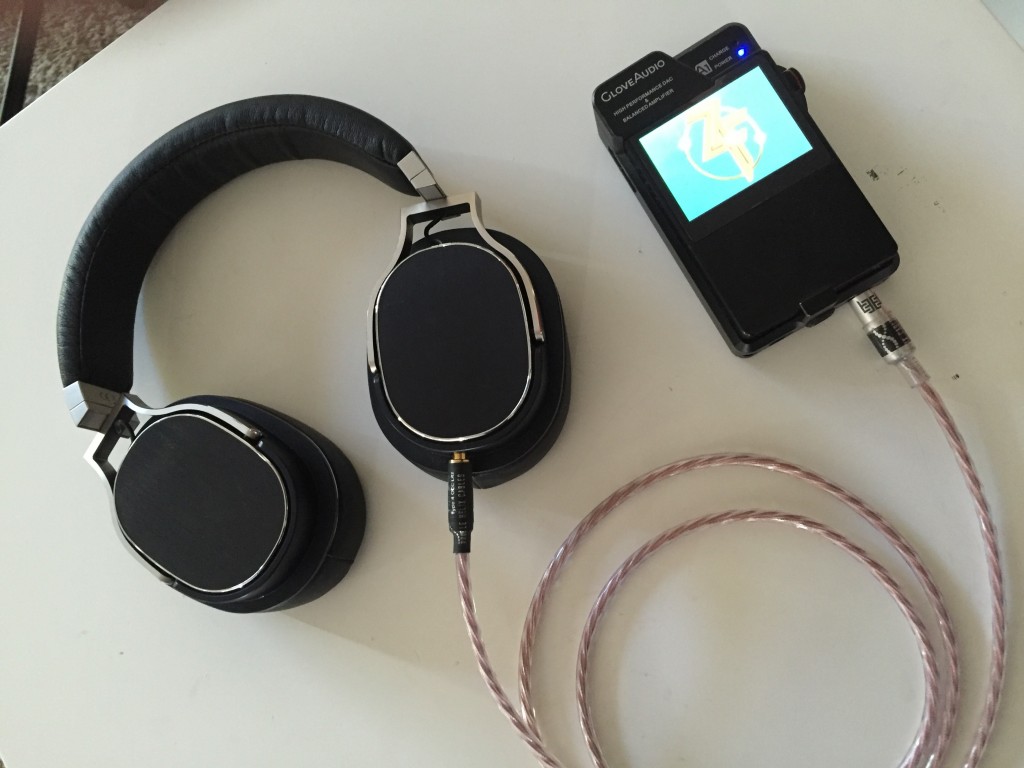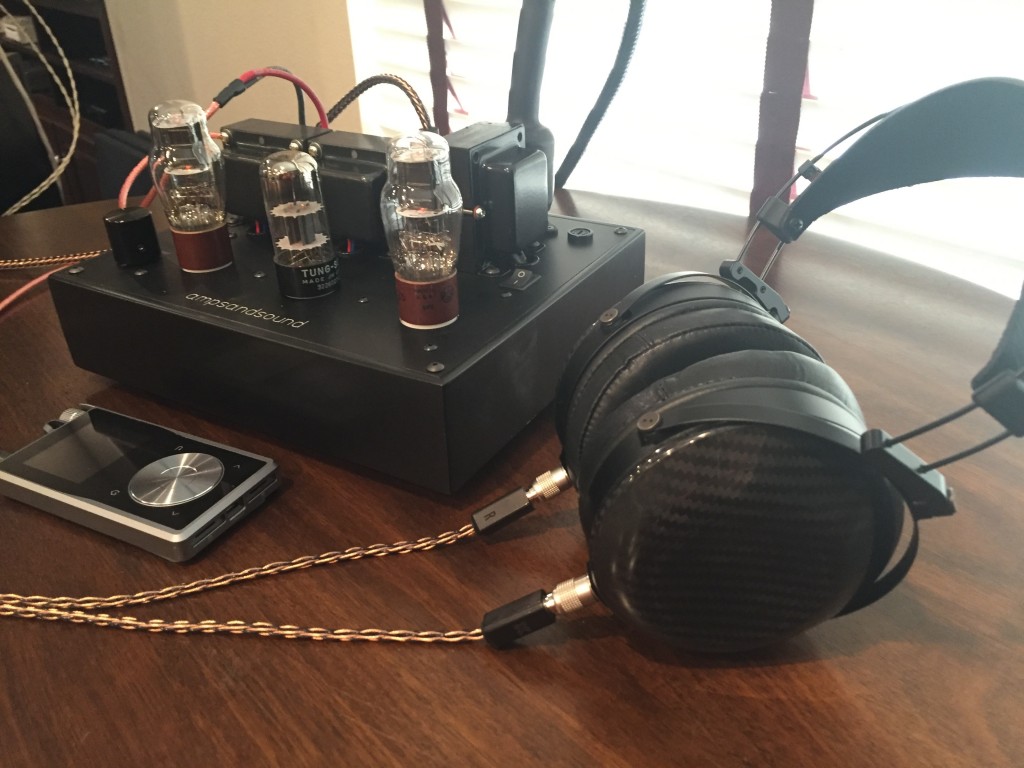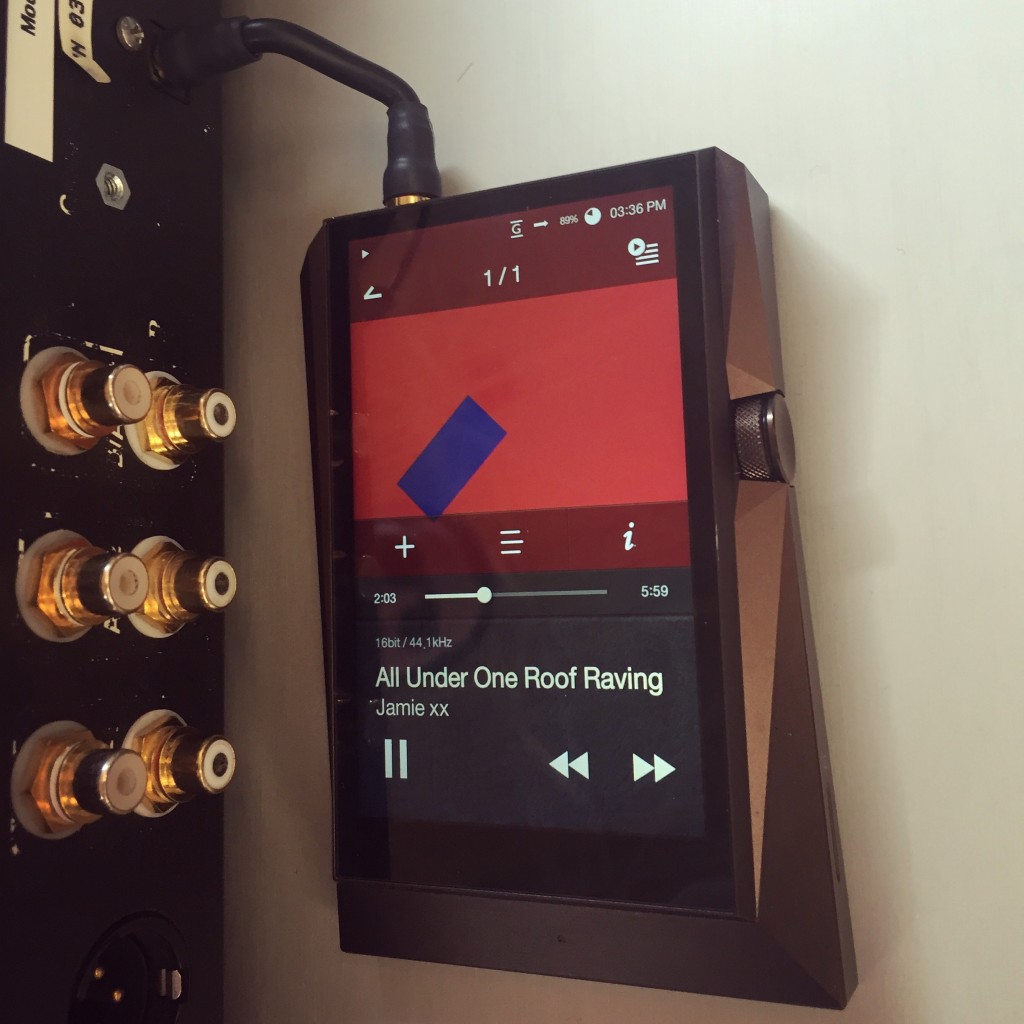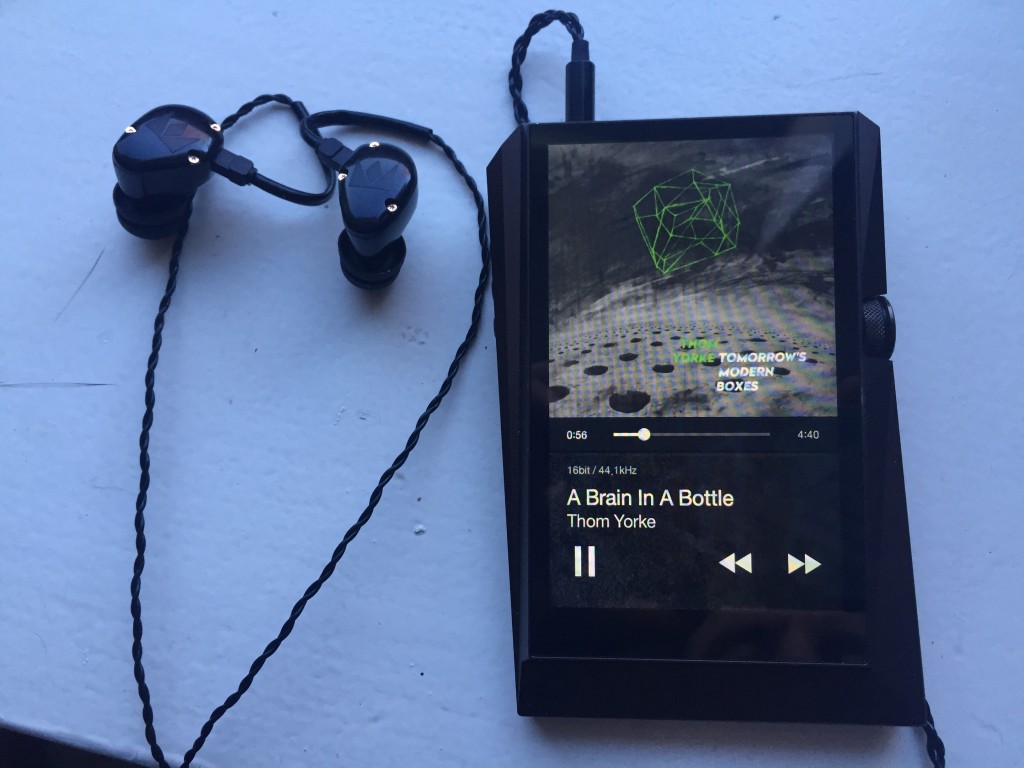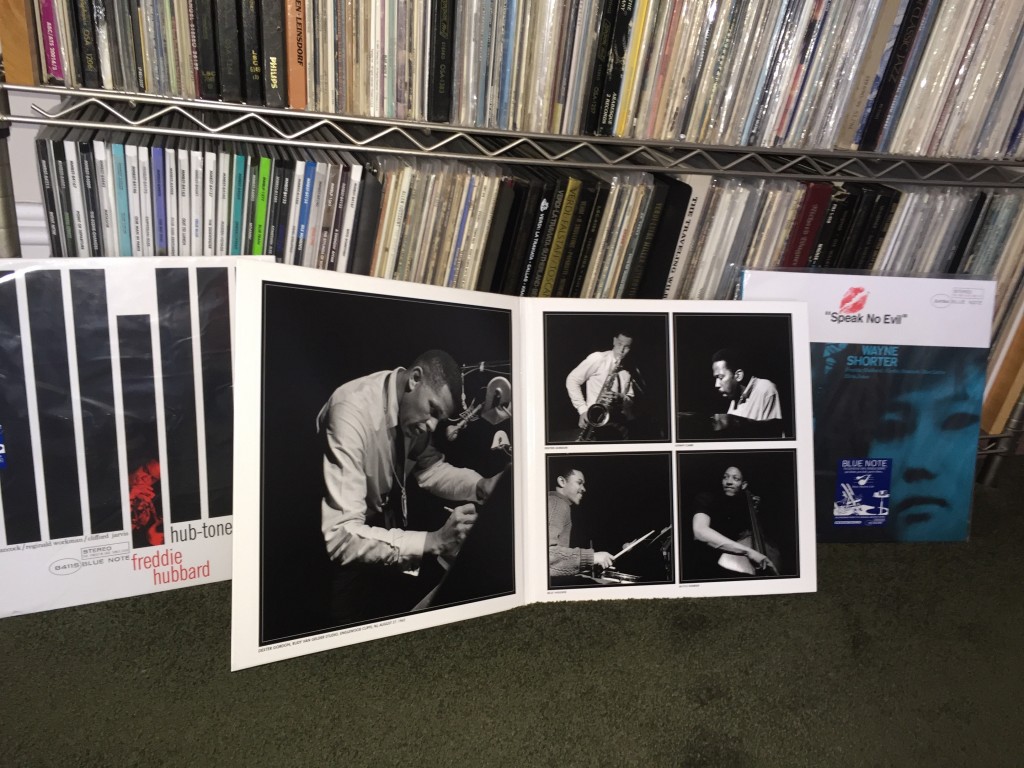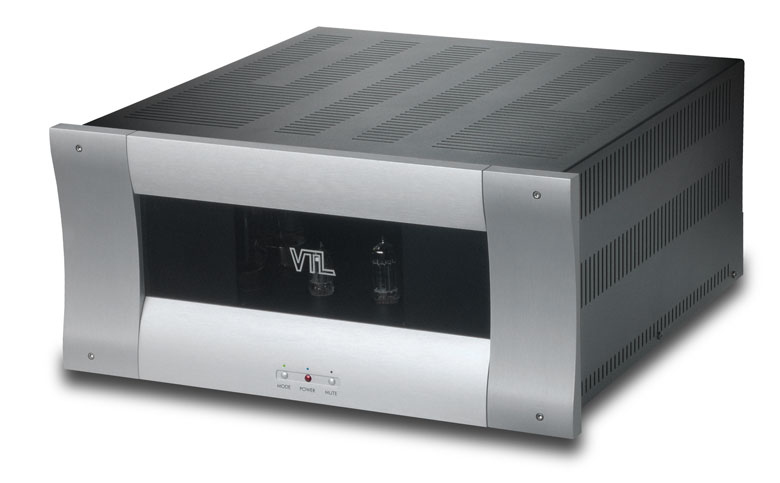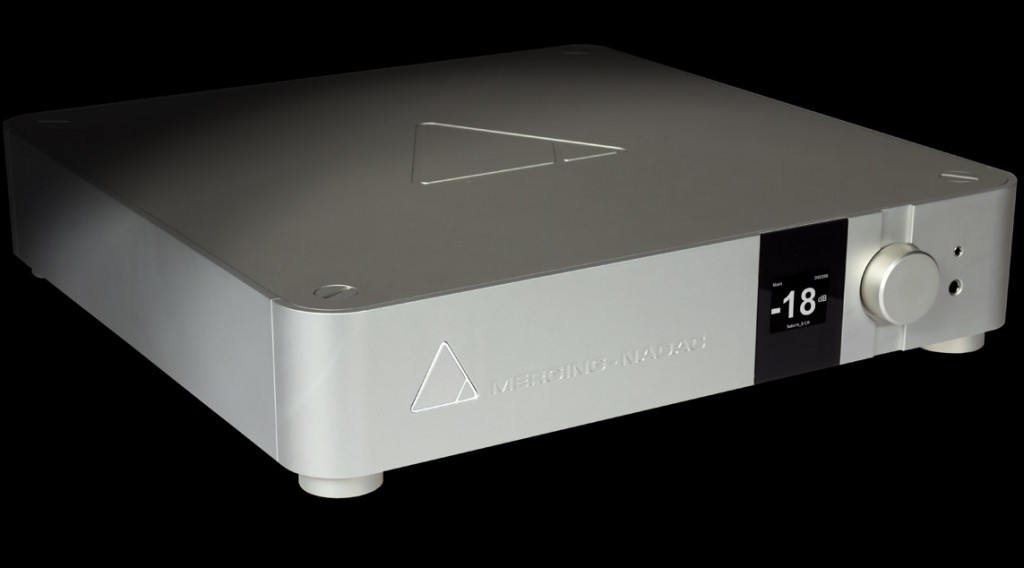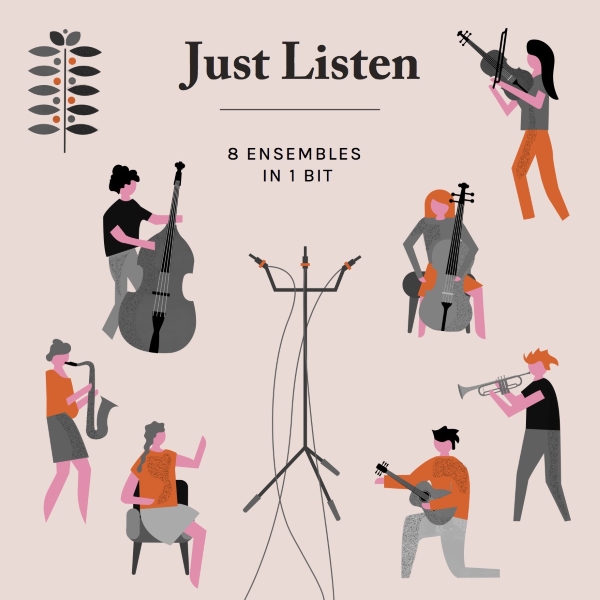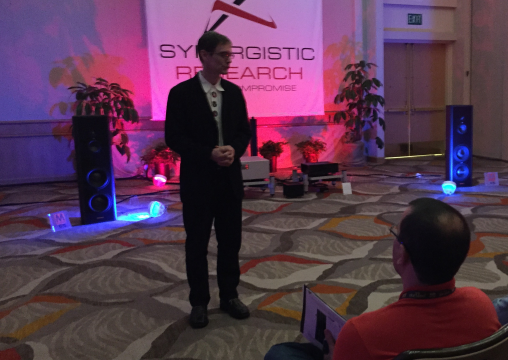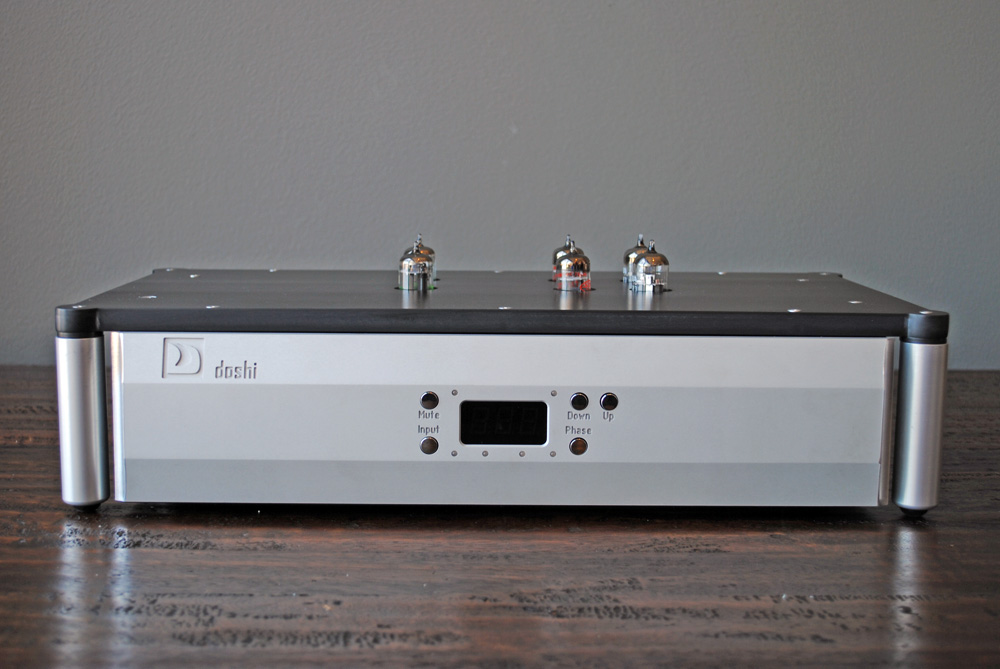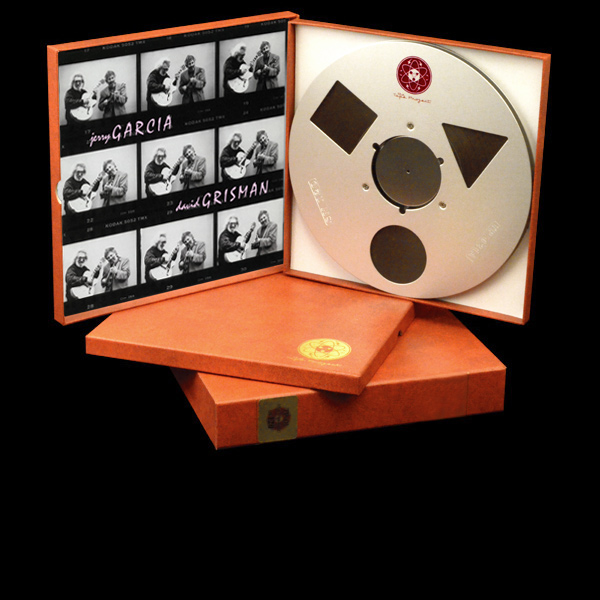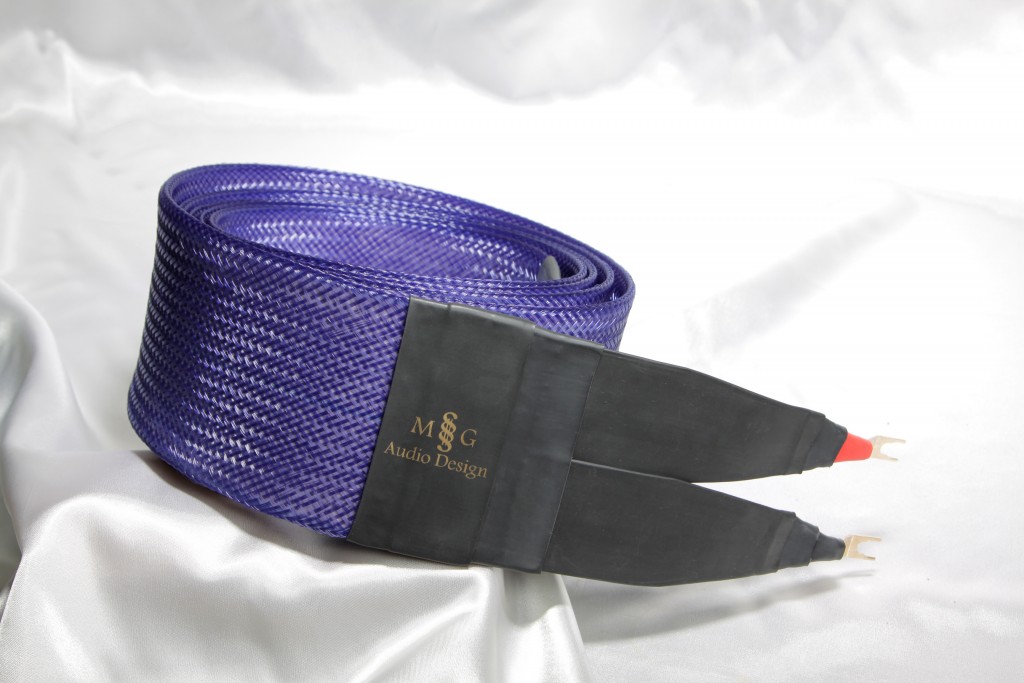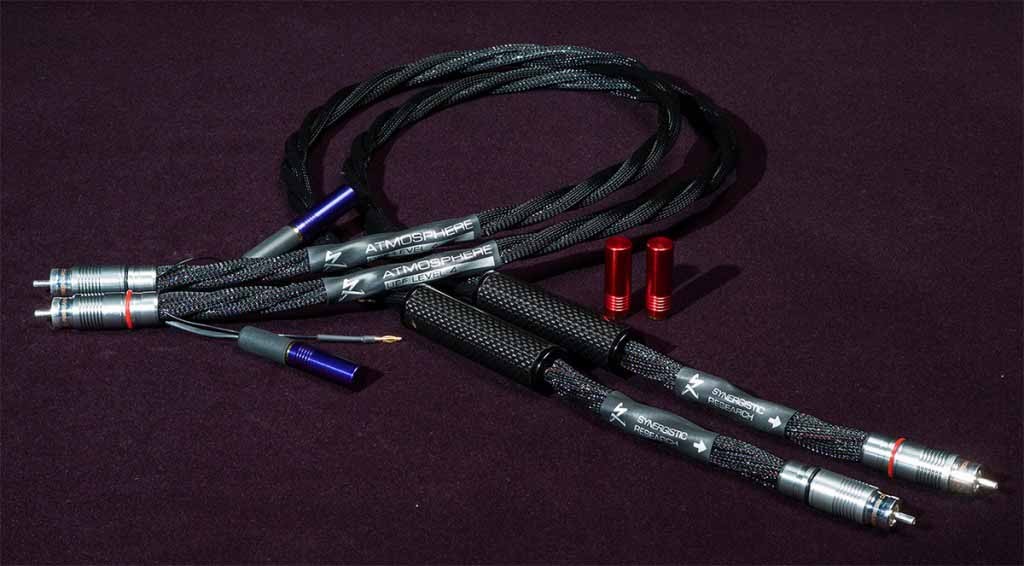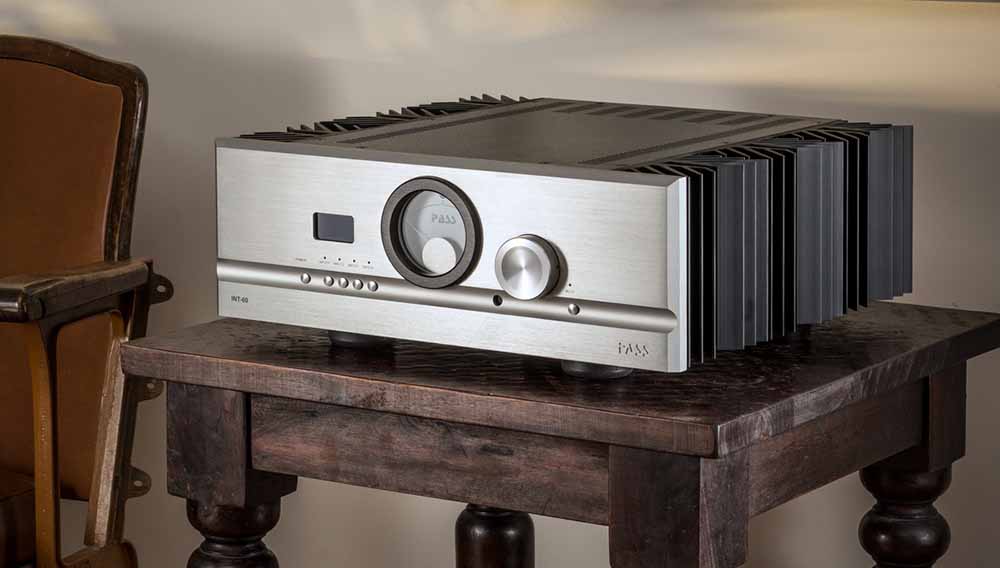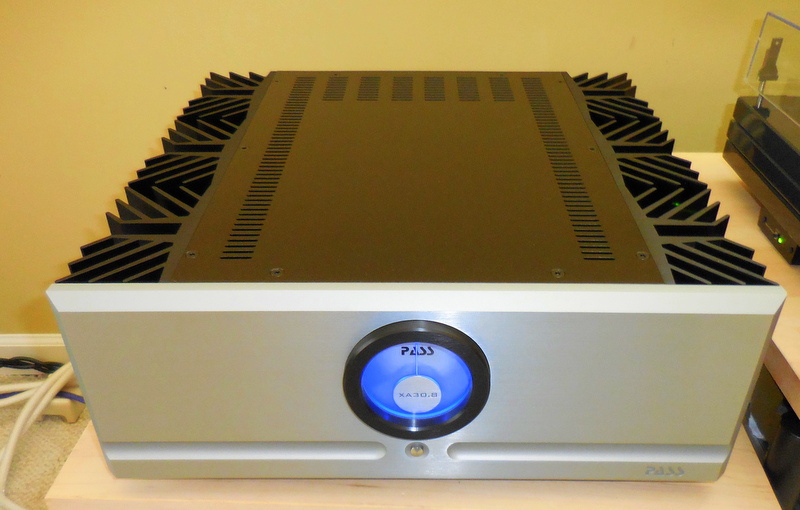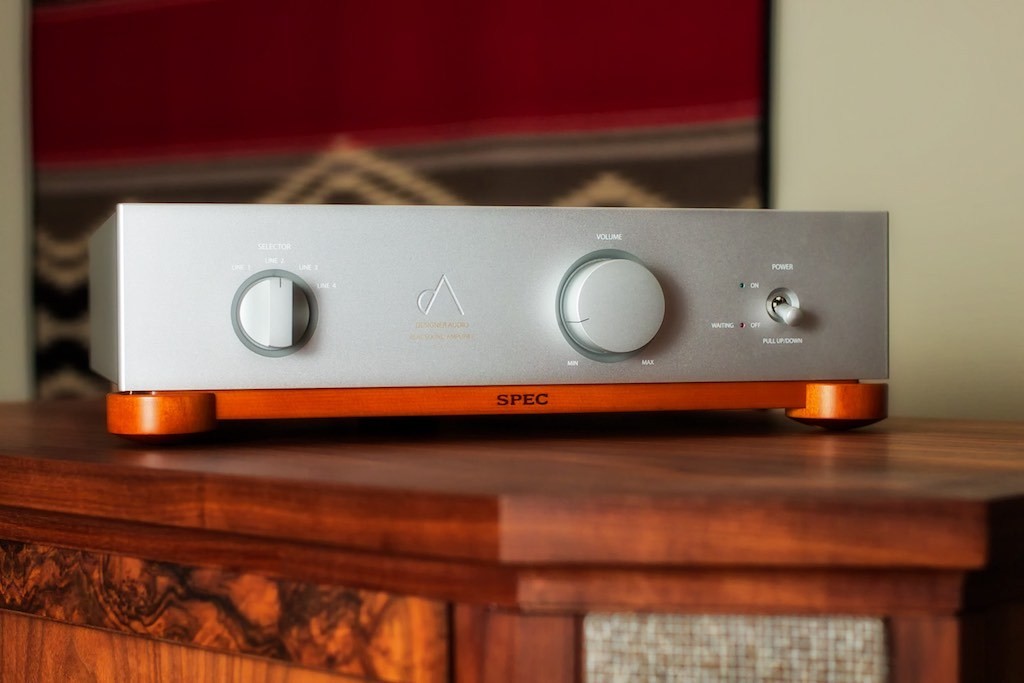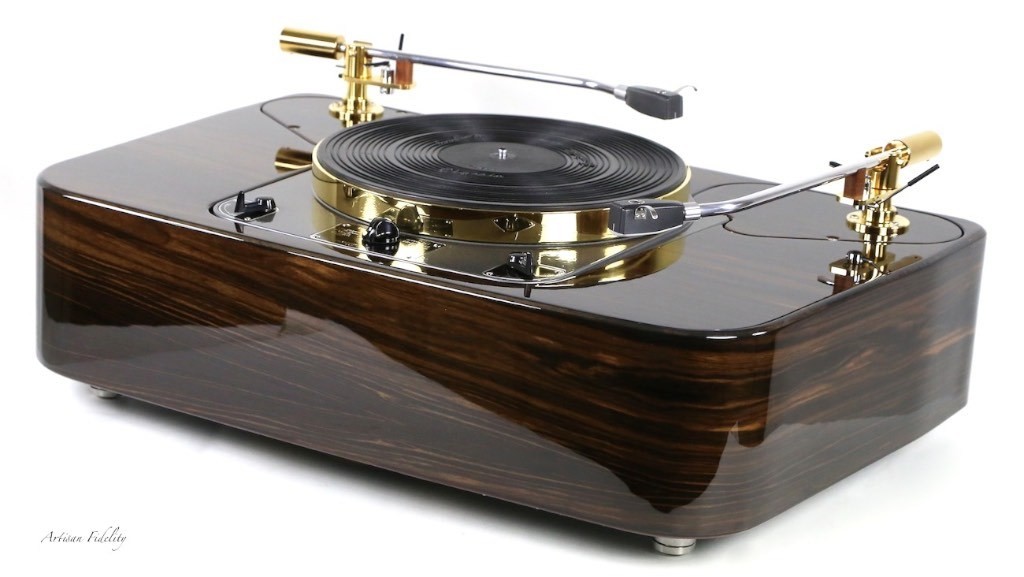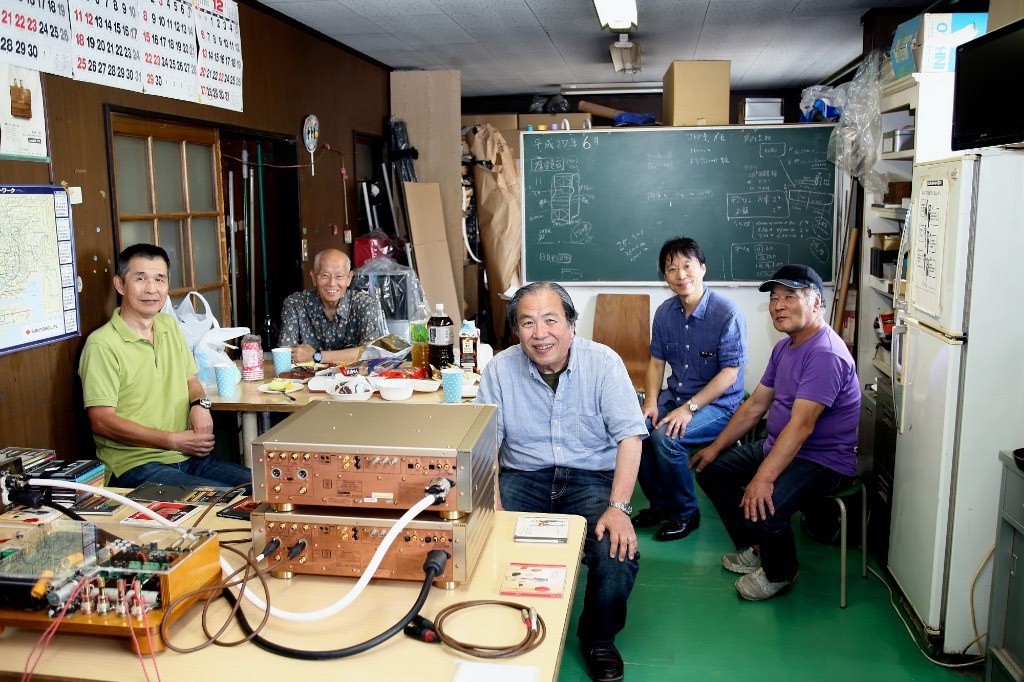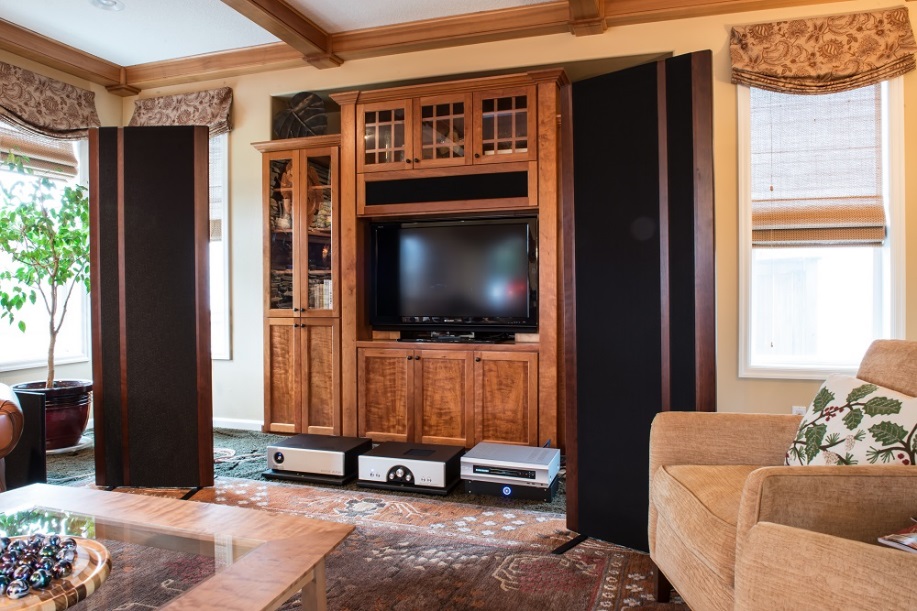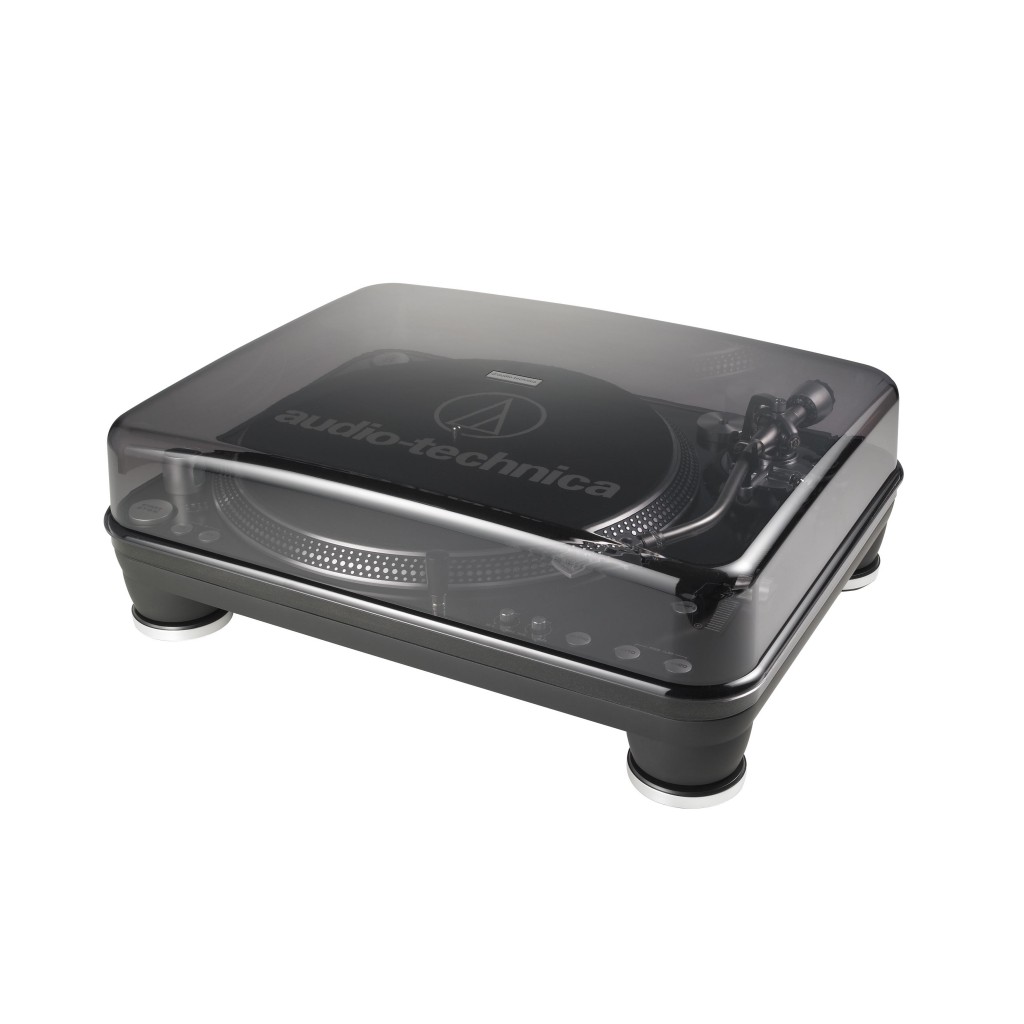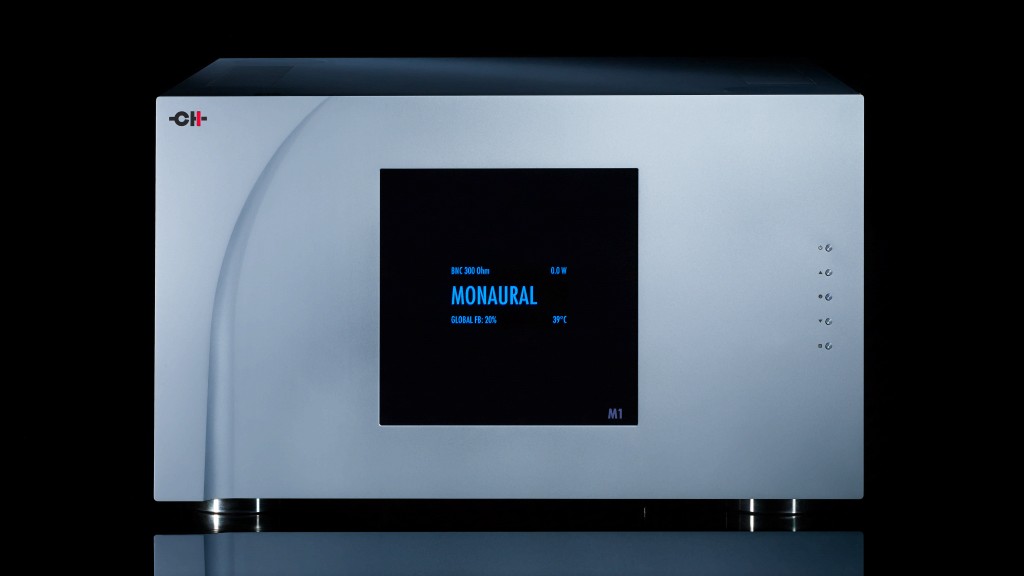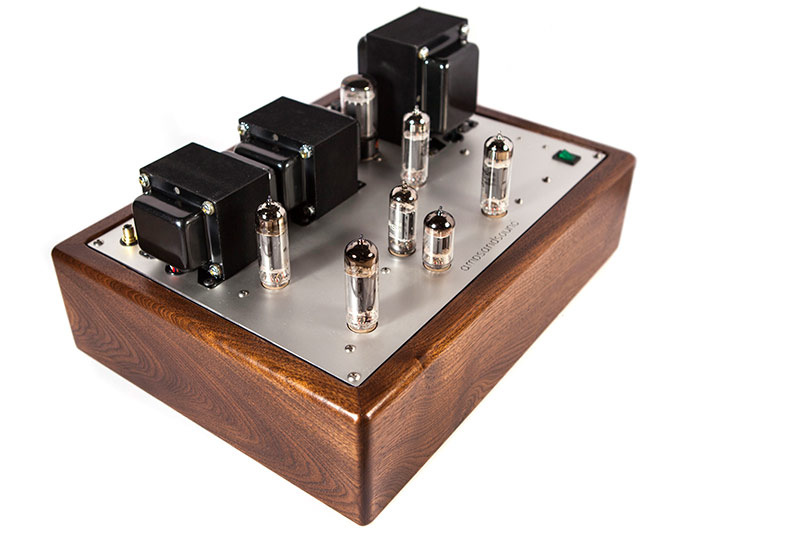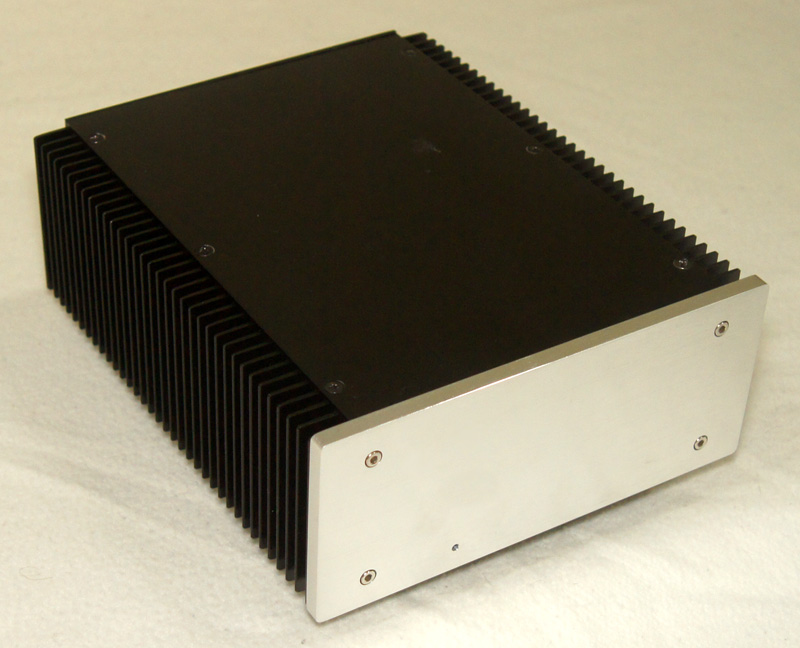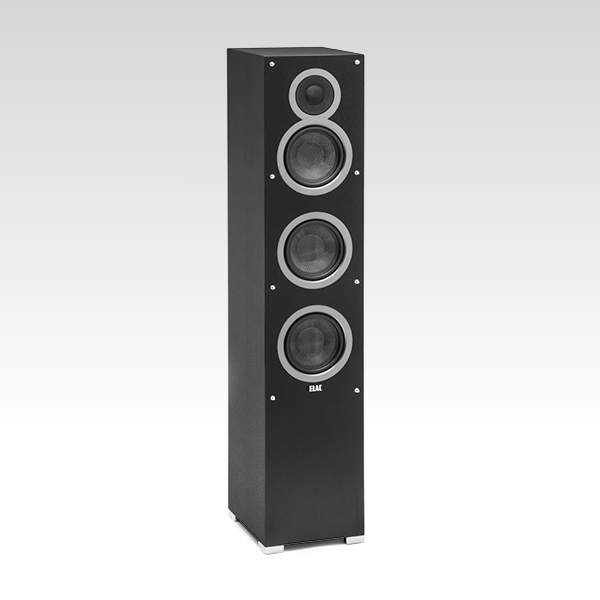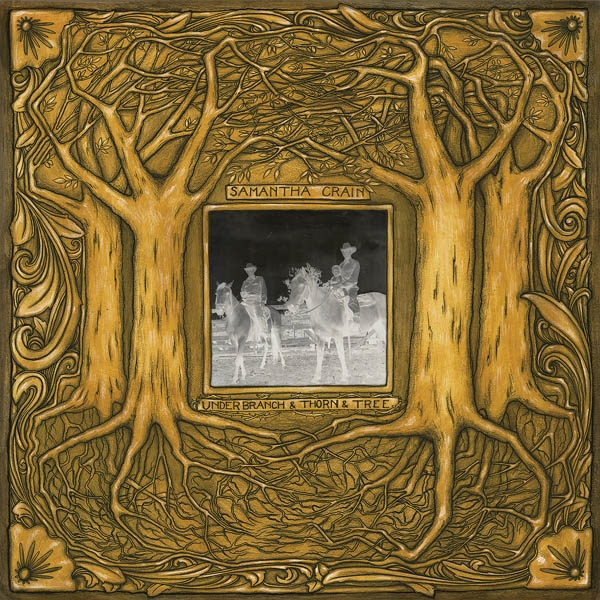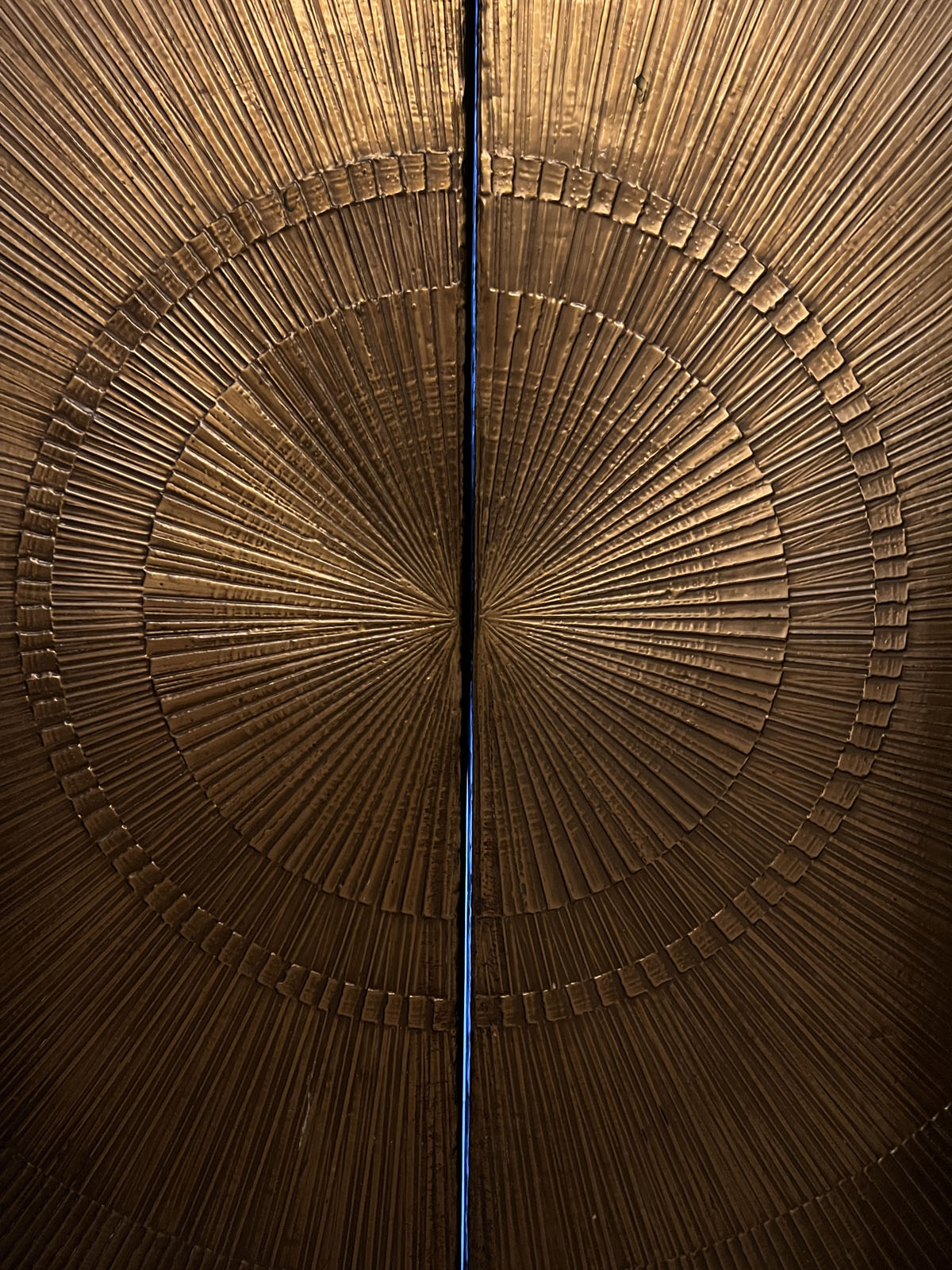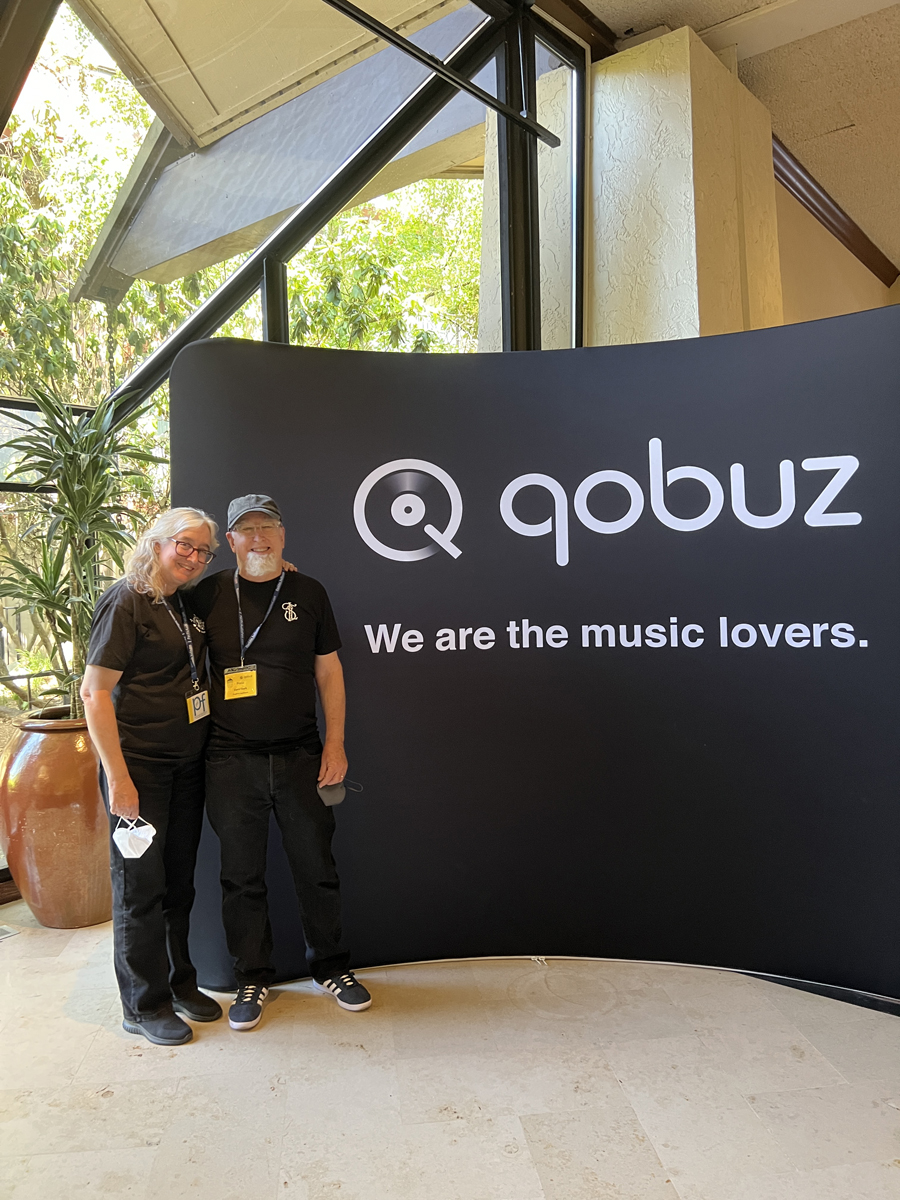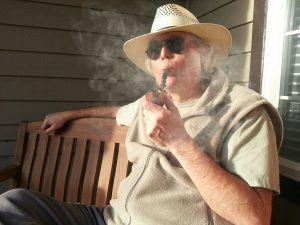Beginning at the end of 2003, PF established its first annual awards for fine audio. The Brutus Award was established for the best that David Robinson and Dave Clark had heard in their own listening rooms during that year. You can think of it as our equivalent of an "Editors' Choice" award.
The Gizmo Award, on the other hand, was established in memory of our very good audio friend, Harvey "Gizmo" Rosenberg, and is given by David Robinson to the most conspicuous audiomaniac(s) of the year. Only one Gizmo is given per year.
The following is an opportunity for our editors and writers to recognize superior merit in the audio arts though their "Writers' Choice Awards". Our writers and reviewers have been given broad leeway to cite excellence in fine audio wherever they find it: products, people, recordings, events, groups, etc., so that our readers can be better informed.
It is our hope that you will find the PF Writers' Choice Awards to be helpful to you in your audio journey.
All the best,
Carol Clark, Editor
Lifetime Achievement Award - Bobby Palkovich
Malcom Gomes
Postive Feedback is proud to bestow on Bobby Palkovich of Merlin Music Systems, its "Lifetime Achievement Award" in recognition of his enduring contribution to the High-End Audio Industry.
Mr. Palkovich, affectionately called the "Wizard of Hemlock" is well known amongst audiophiles for the outstanding performance of his Merlin Music TSM (bookshelf) and VSM (floor-standing) speakers. He had an undeniable love and passion for all things audio. He was respected for the great honesty and integrity with which he conducted himself and his business.
Hundreds of Merlin Speaker owners continue to wax lyrical on many blogs, not just about the indubitable aural pleasure that Merlin Music speakers continue to give them but also about the manner with which Mr. Palkovich took care of them after they became his customers. It is rare to find a Merlin Music Speaker Owner who does not regard Mr. Palkovich as a friend.
I have known Mr. Palkovich for many decades and feel privileged and honored that he considered me a close friend. I was deeply saddened to learnt of his passing on August 20th 2015. Our Industry has lost a truly remarkable gentleman.
Although he is no longer with us in person, the legacy he left behind will ensure that his spirit will live on in the minds and hearts of countless audiophiles who feel blessed to have known him and who are fortunate to own his remarkable sonic creations.
Michael Mercer
Double Helix Cables Beyond Electrons
Writing about cables isn't something I get excited about. Does that make me less of an audiophile? I'm not sure. All I know is that I grew to love Hi-fi because I became addicted to music. I'd be lying if I didn't admit that I love the gear too—after all, we're really just older boys with toys—but it's merely the vehicle for me, as it was for my mentor and many others in our fine hobby/industry. Now, just because I don't necessarily enjoy writing about cables doesn't mean I devalue their place in the high-fidelity signal chain. I learned many years ago: when you've got a system with resolving capabilities, high-quality cables are just as important as the gear itself. After all—when it comes down to it, you can have the greatest-sounding source out there, if that signal path towards your transducer isn't as clean/noise-free and fast as it can be, by the time its hitting your ears it's been all mucked up. So, to me, what I consider a great cable is one that doesn't necessarily "sound" like anything. It does it's job the best it can without imparting a sonic footprint of its own upon the music being reproduced. Meaning: I think the best cable should sound like no cable at all, if that makes any sense!
I think perhaps a better way to express that is I feel a cable should, first and foremost, be as truthful in its representation of the sound, and the soul of the music as possible. It shouldn't draw attention to itself, rather, as part of the system: It should help me forget about hi-fi altogether, allowing me to lose myself in the wonderment of my favorite tunes. Double Helix Cables have been my top-choice for reference headphone and personal audio cables for a couple years now. I have yet to be disappointed by anything Peter Bradstock (lead designer and engineer) has sent me, and so I feel the brand is deserving of this Award. I'm also grateful to have crossed paths with Peter, as we have a dearly-departed friend in common: our beloved Lee Weiland of Cryoparts and Locus Design. Lee's products were also awarded many honors here at Positive Feedback. He was a true pioneer of high end computer-based audio and Peter was lucky enough to learn from Lee while he was still with us. I'm proud to see where Peter has taken that foundation, developing his own ground-breaking products from the ground up! Once I heard my first DHC headphone lead—I believe it was a Molecule SE on my Audeze LCD-2s, I was hooked. As a reader wrote me recently, after purchasing DHC cables upon my recommendation, "it was as if a veil had been lifted." I could hear more deeply into the music. The staging became more dimensional, voices and instruments more realistic, and the overall soundstage gained width and depth of field.
Sonic realizations like that have only continued the more DHC cables I try. Currently, my number one go-to reference headphone leads, whether it's for my MrSpeakers ETHER, ETHER-C, Sennheiser HD800s, or my Audeze LCD-series—I reach for DHC Complement4 Spore. I have this cable in numerous configurations: 4-pin XLR, 1/4", 3.5mm, and 2.5mm. Peter has been outfitting all my demo cables with the 2.5mm termination lately, because he built an awesome set of adapters for that end. With the 2.5mm TRRS balanced tip as the base, I can go from that to 4-pin XLR, RSA (a.k.a Rubiconn balanced), 1/4", and even 3.5mm (stereo mini). He even built me break-out dual 2.5mm TRRS leads for use with products like the RAL line of headphone amp/DACs. RAL utilizes dual-25.mm for their balanced output. So not only does DHC make, IMHO, perhaps the finest headphone and other personal audio cables on the market: I also use Peters 3.5mm-to-3.5mm for connection between portable components and his fabulous USB cables—but he also offers a level of flexibility and creative ways to hook up just about anything that is wholly unmatched by other companies today. His basic cables made a huge impact on the sound of everything from my wonderfully affordable Oppo PM3 planar-magnetic cans to my Bang&Olufsen H6s, while his low and high end stuff helped me get the most out of my Audeze LCDs, MrSpeakers, Stax and Sennheiser HD800s!
I hate being pressed to offer my opinion on what I believe is "the best cable". I believe, that because no matter how we argue our way around it—we're still imbibing music through our gear, and music is an art form! It's all in the ear of the beholder. However, when I'm asked what cables I turn to most when it comes to personal audio stuff my answer, since I found out about them, has always been DHC ahead of the pack. If you're looking to squeeze the most out of your personal audio system; sonically, and emotively, I can't make a higher recommendation than Double Helix Cables. They have became an absolute necessity in my personal audio arsenal. Don't waste time if this sounds like something you're looking for!
MrSpeakers ETHER-C
From the Outside-In
Dan Clark and Co. have much to proud of lately. Well: He's offered a solid product from the day MrSpeakers was originally born—but he was admittedly, IMHO, self-limited physically and sonically by the Fostex T50-RP headphone. Ya see: Mr. Clark built his reputation by heavily modding and offering cans based around the T50-RP! The MrSpeakers Mad Dog, and later Alpha Dog (incorporating the worlds first 3D printed ear cups—designed by Clark) were, in-essence, re-designed T50s with Clark's magic-music lovin' engineering chops. That's actually when I knew he could build his own un-compromising (well, as close as he can get—he keeps pushin' forward) stunner headphones that would pay homage more to the music than anything else. Why did I believe this? Because I personally can't stand the Fostex T50rp, and believe it or not, I'm not trying to besmirch that pair a' cans. I just dealt with them all the time in the music biz/recording studio world, and they were always broken or problematic. Now, that was due to user abuse—but it still left a bad taste in my mouth for the headphones. But, when I decided to buy Clarks Mad Dogs, simply because I saw Jude Mansilla; Founder of Head-Fi.org, purchase a pair at a Los Angeles Head-Fi Meet I took a chance. I greatly respect Judes opinion, obviously, but I also needed a pair of closed-based planars! This was before the age of my beloved Audeze LCD-XC. Dan Clark actually gave me the gift of private listening sessions with tasty planar magnetic headphones before anybody! I loved, and still do, the Mad Dogs (and subsequent Alpha Dogs) sound, especially their bass extension and lower-mid silkiness. They're still some of my favorite cans for electronic dance music. Now, with his own headphones: The ETHER (open-back) and ETHER-C, MrSpeakers has earned its name, as ironic as that may sound. I'll explain in a second...
MrSpeakers has, in my opinion, released two soon-to-be-considered classic planar magnetic headphones with the ETHER and ETHER-C. The ETHER open-back moved me so much I felt it required a series, as opposed to attempt spittin' everything I was experiencing in the confines of one review! You can find one and two at OccupyHifi (proud to be part of the PF Fam). Clark and Co. ascended the rest beyond sound quality with their ETHER series. Finally, I have two planar magnetic cans that are not only more comfortable than the rest, but they sound better to me. They're what many of us might call more "truthful". The sonic character that’s most desirable for me, and which is found in either the ETHER-C and ETHER, is not having a signature. In a human analogy: producer Arif Mardin was not only known for his arranging and technical production, but to people like Stevie Wonder, he should be known for his ability to get the most out of the artist. Part of his greatness came from his ability to help guide the artist’s vision, to achieve the best production goals for the music. In other words: his great talent was that he didn't always have a particular sonic signature. He devoted his efforts to making the artist's album the best it could be, and ultimately it's about their music. The ETHERs have that sparkle of just sounding more true to the music by not calling attention to themselves as much as what they're reproducing.
The fact that MrSpeakers are so light by-comparison to others on the market and so damn comfortable makes ‘em a dream for my reviewer ears. I'm proud of Mr. Clark and their fantastic group. Their growth was the truest essence of the term "meteoric rise" and it's well-deserved. Like Audeze before them, these guys have broken through to another level—and I'm still lovin' my sonic exploration with ‘em almost every day. Now, if I was ever forced to choose (a geeky question, but common) I like the ETHER-C just a lil' more than its open-back brethren. Both are tremendous sonic achievements, but ETHER-C has found a place in my heart, and so it’s always in my road-case lately. I'm rockin' it right now with AmpsandSounds' Kenzie tube headphone amp (column to come) and my Bay Area boys HAZARDIZ and Kenyattas' "What It's All About", and I can't keep still in this damn chair. It's hands in the air, thinkin' about my girl. That's what I'm lookin' for in a pair of headphones. I wanna stop thinkin' bout ‘em, cept for writing this article. The music’s just fillin' me with chills and it's all love. Think that's poetic puffery? My condolences. But this is at the heart of why MrSpeakers ETHER-C gets this award nod before the official review (though they've been mentioned in my columns at OccupyHifi).
Before the magical Audeze LCD-3 open-back planar magnetic headphones, cans were just a creation tool for me. I rocked ‘em when I DJ'd (all analog by the way, I only spin wax and beatmatch—it's gotta be bout the music and the art of it to move my heart) and when I worked in my project studio. I loved my Grado SR-80s and Sennheiser HD-25-1, but I never considered headphones when it came to listening for pleasure or critical listening. They all sounded confined. Grammy-Award winning producer Frank Filipetti (interview coming here at Positive Feedback) told me he "hated ‘em" at one point—then I asked if he would give the LCD-3 a shot. He came up with a greater single quote than ever I could: "These are not headphones. Calling them headphones, or even the greatest headphones is doing a disservice to Audeze. They're head-speakers". Damn. That's how I felt about the large LCD-3s! Many end users spoke about their weight, that they're heavy. I know they've heavier than most on paper, but the weight never bothered me. As a matter of fact, I never noticed it, until I got my ETHER and ETHER-Cs! That's also a big part of why these headphones are so special to me. They've transformed my experience with closed and open planar magnetic cans, and not merely due to their sonic prowess. They're also light and comfortable! Imagine that. I can do listening marathons with ETHER-Cs beyond anything else right now. That's almost enough for me, when someone else says that. But luckily I can also say they produce some of the most beautiful, engaging music playback that I know of currently; period.
Dan Clark's also offered some tuning options recently. They come in the form of felt insert pads; white and black. I love the sound of the headphones enough without anything—but I understand Clark's desire to cater to different tastes without compromising the integrity of the headphone design. The white pads are actually pretty cool for listening to electronic dance music (or, the gag-inspiring commercialized term "EDM" of you will). I hear more of an accentuation of the low end and lower mid-bass perhaps more than anything. So I enjoy it with electronic tunes, but I wouldn't recommend anything over the cans themselves. But it doesn't hurt to have options. They play well equally well with tubes and solid-state. They're not as difficult to drive as many have said, IMHO. If I was put to an answer with regard to what I believe their sonic signature was, I would have to say the same as I said about their open-back sister: Neutrality. Now, when I say neutrality I don't mean always flat in terms of frequency response, per se. Well, they may measure well in that regard, I don't even know (or, frankly, care) or at least their music performance doesn't sound so linear it's overly-polite and boring—I'm trying to say. Their bass response smacks (stealin' a word from my boy Kenyatta) like I need it, for everything from underground dubstep to jazz. It's booty-shakin'. At least it moves my girl like that. Again, I think that says more than fifteen-hundred words of mine could. The midrange is sweetly layered and textured. Everything from xylophones to voices grabs me with their realism. The highs too of course, but then I just realized, this is so favorable I must be a schill right? Wrong—though think what you want. I'm leading with my heart as I always promised my readers I would. You want more audiophily puffery? NO disrespect to any of my scribe family in the hi-fi press—I'm merely saying that, for now, I don't know how to punctuate my positive feelings about MrSpeakers more in this space. If you're seeking, in my opinion, the very height, all-around: from fit, finish, and sound, of the planar-magnetic headphone game—I don't need to seek further than the ETHER series right now. Also if you like to take the damn things with you like my crazy Head-Fi a__, consider that these are not collapsible portable headphones; they're light and fit in my Pelican roadcase wonderfully. I can't go anywhere, if possible, without means of hearing my music in a moving way in some form or another. When I wanna show off what I think is a kick-a__ portable or desktop system, both scenarios include MrSpeakers ETHER-C. Could I punch that point home farther? By the way: What I mean by the "Outside-In" is that the ETHER-Cs stage much like a loudspeaker in a loaded room. The experience is airy, open and dimensional. How do they manage this in a closed-back? You'll have to ask them. I'm not sure. Check ‘em out if this is your thing immediately.
Astell&Kern AK380
The New DAP King
I've been an Astell&Kern devotee since their lil' kick-a__ AK100 high resolution DAP (digital-audio-player) hit the scene a few years ago. I'll never forget CES 2012… I was sitting in the Nordost room waiting for my friend Alex Rosson (Co-Founder of Audeze and head of Shinola Audio). He walked in rockin' my Audeze LCD-3s, ALO International headphone amplifier, and the slick lil' black anodized AK100. I asked him, "What the hell is that?" He told me it was a portable hi-rez audio player from this company called Astell&Kern. I asked where they were, hunted 'em down, met Owen Kwon and Jimmy Moon…and then asked them if I could purchase an AK100 at press accommodation right there on the spot. I've been a serious fan ever since. Along the way, I've reviewed most of their DAPs, and I never leave home without one (or two most of the time) in my backpack. The AK380, their latest masterpiece, has elevated portable high resolution audio to a new level. The 380's resolving capabilities, spaciousness, dynamic range, micro and macro-dynamic detail retrieval are wholly unmatched today. Some people will look at its price tag and scoff, but, much like the cost of a Patek Phillipe or a Bentley, sometimes the finer things in life cost a s__load of money! I believe a big part of my job is to report on the things that I feel represent the state-of-the-art, whether in-room hi-fi or personal audio, and the AK380 is at the bleeding-edge of the high end personal audio arts.
As I sit here bangin' away at the keyboard, listening to my AK380 and Noble Audio SAVANT IEMs (review to come) via Moon Audio's amazing Silver Dragon IEM cables, rockin' Recondite's Iffy (reviewed HERE at Positive-Feedback) I'm blown-away at the sheer weight, the velocity of the bass and upper-midbass. The upper frequencies—hats, blips, and ambient textures—are also beautifully rendered. But the bottom-end is just ridiculous. It thumps with no noticeable overhang and lag whatsoever. The word "tight" could possibly be the most widely used term when it comes to sub-bass, but it definitely applies here. I don't mean to undermine the AK308's midrange clarity by emphasizing the liquidity of the bass however. I love underground electronic music, so I like me some BASS. But the mids are creamy and dimensional. I don't mean creamy as in congested; quite the contrary the mids are coherent and spacious… they also have this magnificent warmth to 'em.
The dual AKM DACs make for a formidable D-to-A system in this digital audio player. I spoke of its resolving capabilities and that is where the AK380 shines. They even put effort into making the attenuation more precise. The 380 has twice the steps of the also-fantastic AK240, so you might think its got twice the power. Not so—but like I said, precision is the name of the game here. That is, perhaps the only gripe I have with the player, I wish it had a more powerful headphone amplifier. A&K offers a stackable amplifier for the unit and I'll be exploring that soon. But I wish the component itself had more juice; though it certainly has what it needs to do the job with my portable-use cans. The unit is also dead-quiet with CIEMs (custom in-ear-monitors) and IEMs. That's a nice touch. As a matter of fact I end up using the AK380 with IEMs more often than over or on-ear headphones. That's the mark of a solid portable player too: its ability to play well with uber-sensative and noise-revealing IEMs. The fit and finish are first-rate, and its ultra-modern chassis oozes class. I like the fact that A&K chose to offer touch-screen volume control and a physical knob to turn for dialing in the gain just where I want it… and the larger screen size makes operation a breeze. Its Android-based UI is easy to navigate and fast. I also love the fact that A&K continues to offer a 2.5 mm TRRS output for driving headphones fully-balanced. When doing comparisons, I found that running balanced offered greater separation, dynamic range, and overall soundstage width and depth of field. You're also get to take advantage of Astell&Kern’s AK Connect via your Wi-Fi network, allowing you to access your digital music library through the player. The unit also updates its firmware whenever you connect to the internet via the Wi-Fi as well, so there's less to worry with regard to keeping the UI current. With its rockin' sound, slick enclosure, and multi-feature set, the Astell&Kern AK380 is my current King of the DAPs, and I don't see it being de-throned anytime soon! If this is within your budget and you're into high end personal audio… just pull the trigger. I can't imagine not falling in love with this thing.
Larry Cox
I chose my review partners well this year. I liked and recommend all four products I reviewed this year. I am, however, limited to recommending three. Having said that, if you see what I wrote about, know that I'd recommend all of them here, if I could.
Pear Audio Blue Reference preamplifier $5995 HERE
Beautiful sounding, full-function preamplifier from Slovenia. Sweet, detailed and mesmerizing. Dual mono volume pots might deter some, but they'd miss out on a beguiling and beautiful sounding preamplifier. Runs hot, no balanced connectors and you can't place the power supply next to the control chassis so the slim chassis end taking more space than you'd think. But heck, if you're buying a tubed full function preamplifier, aren't you going to show it off? Somewhat ironically, I would say the only nit I have for the Reference preamplifier is that the wood working looks a bit more homemade than maybe a $5995 preamplifier should. Still, it's one of the few full function preamplifiers on the market. Not for sale on every door stop, so you'll have to look, but really nice and worth the work to find.
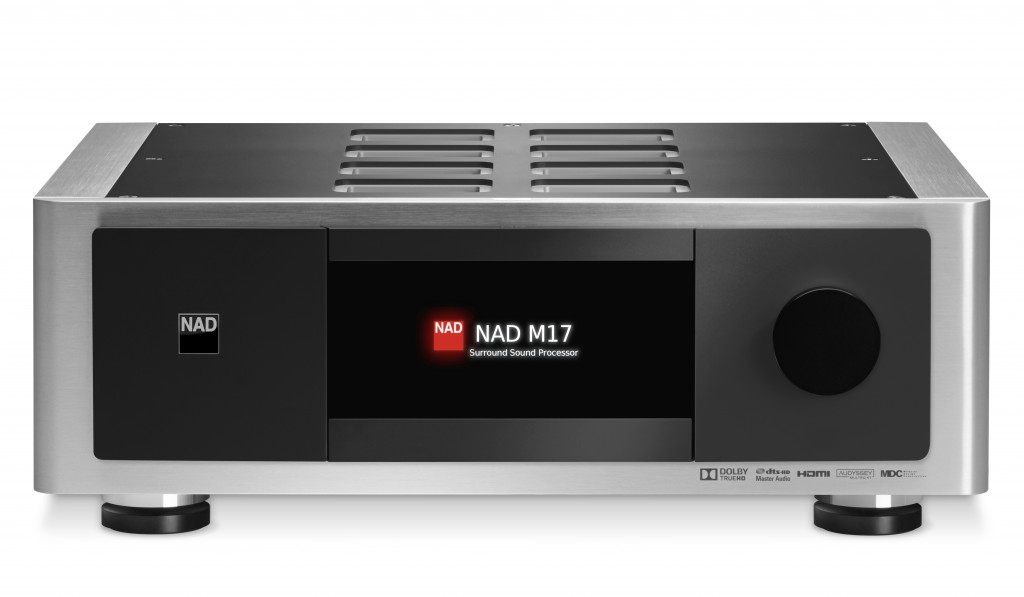
NAD M17 Surround Sound preamplifier $5995 HERE
Over the course of several months with the review piece, it became invisible. I essentially forgot I was no longer listening to a surround sound preamplifier and not my reference. It does not sound like my reference, both that and the M17 are not utterly transparent, but both were eminently musical.
As a preamplifier it bought nearly everything I'd want in a high resolution system save digitizing analog signals. If you're not a vinyl devotee perhaps there's nothing to be concerned about. Even with the digitization, I simply forgot I had a wholly digital preamplifier in my system, even when listening to two channel music—again with the caveat that more resolving systems will resolve more fine detail. The M17's imprint was so light, that it took effort to find it; a very slight bit of glossing I infer, because... that's as close to an imprint as I could find. Control features are simple enough for nearly anyone to operate without consulting the owner's manual. Not as detailed as some, but I am unaware of a more musical two channel/surround sound preamplifier.
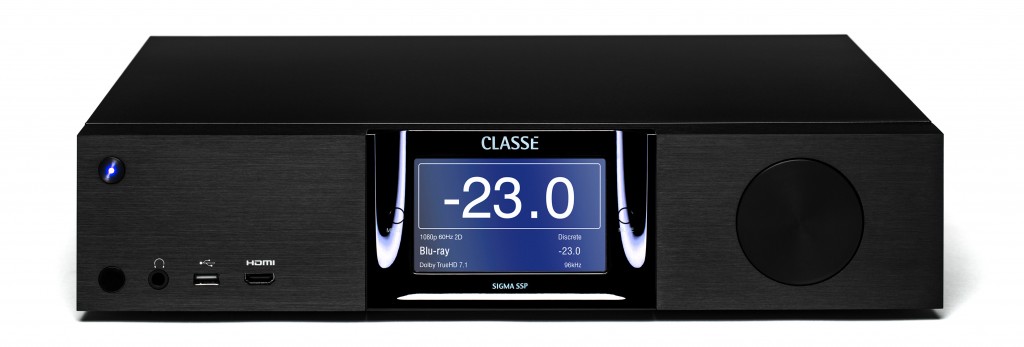
Classe Sigma SSP $5499 HERE
Minimalist surround sound preamplifier that may well be all an audiophile needs—yes, the budget is either a bit high or not high enough at $4,995; about $5,495 with onboard phono stage installed. However, the performance is satisfying. Mixes digital and analog capacities at a level that easily could function as either a two channel preamplifier or as a surround sound preamplifier. More detailed than the NAD M17 but without becoming clearly analytical, change the source material and you might change your opinion on analytical or romantic. For this audiophile, it balanced my audio and video needs nearly perfectly. Plenty of inputs for the source components most audiophiles, videophiles and gamers will need—but not enough for every source ever created. Watching The Book of Life on Blu Ray at home was a visual and auditory delight. With a somewhat more romantic system than mine, could be divine. Sound is neither kind nor unkind, just a GIGO monster, i.e. garbage-in and garbage-out. A bit complicated for those that aren't adventurous with what is essentially manual programming a home theater preamplifier. Not much, if any, sweetener in the preamplifier or surround sound.
Mark Pearson
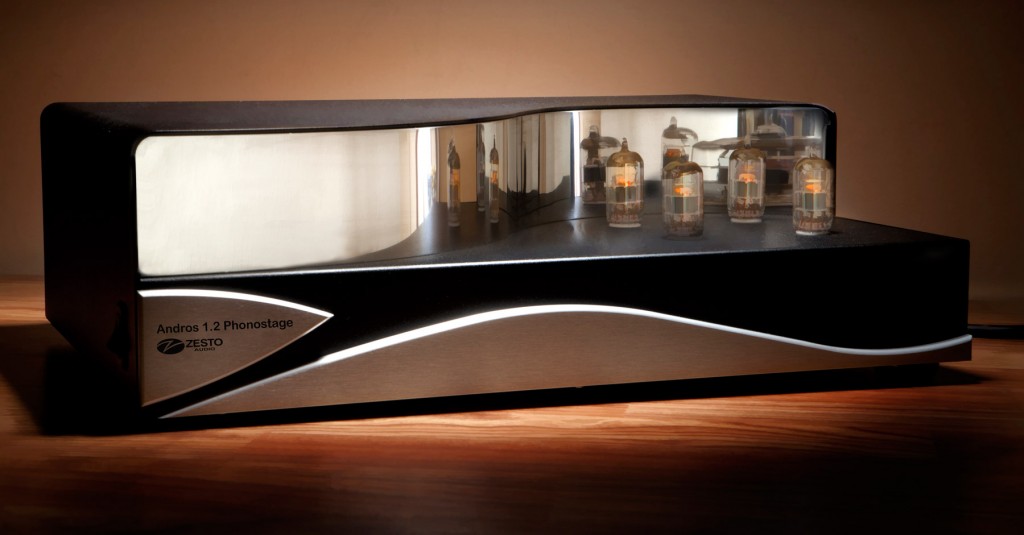
Zesto Andros 1.2 Phono Stage $4700 HERE
My choice for product of the year awards has to go to the Zesto Andros 1.2 phono preamp. The Andros 1.2 just does everything right. It is dynamic, it has gorgeous tonal colors, it throws a big and deep soundstage, and it's super quiet. The Andros 1.2 is the first phono stage that uses step-up transformers that I actually loved the sound of. The combination of the step-up transformers used by George Counnas and the four 12AX7 tubes is the "Goldilocks" combination that is "just right" for low output moving coil cartridges.
The Andros 1.2 has all adjustments readily available on the back panel. It has one set of RCA inputs and one set of balanced inputs for MC cartridges and one set of inputs for MM. Not only does the Andros 1.2 sound great, it looks great as well. Oh, and the cherry on the top is that it is designed and manufactured in the U.S. I loved it so much that I bought the review sample.
Danny Kaey
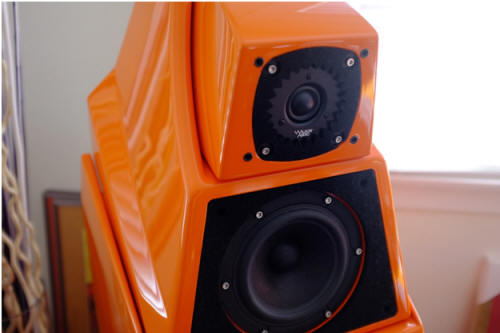
Wilson Audio Alexia $52,000 a pair HERE
Even as many a great speaker passed through K-son's chez, Alexia is the one that got more than the usual "nod". To say that Alexia is merely another one of those uber speakers is to grossly underestimate its relevance and importance to HiFi's ecosystem. Without question, Wilson Audio Specialties succeeded in creating a benchmark loudspeaker system that has not only taken the industry by storm as a defined benchmark standard, but has also undeniably added a very healthy bottom line to this Utah company's revenue stream (sales numbers are obviously always a well guarded secret in our niche market, alas, if I were to go by using the "Apple effect" of market share, ie. how much share does Apple effectively have? Answer: simply look through a coffee shop or airport and take notice).
In my humble opinion, which, let's face it, isn't all that humble at times, Alexia succeeds because it creates a musical reality field unmatched by any other speaker system I've ever heard. Weather your quest is dynamic realism, bottom end extension (oh that musical bass!), detail resolution and grand canyon-like soundstaging, then Alexia is a speaker you simply must audition. To boot, these qualities are heard in the most varying of conditions, ranging from trade show floors, to concert hall like setups and your typical home sized family room. Add Wilson Audio's fanatical attention to even the most minute of details and you have an endgame speaker system. I bought the review pair—'nuff said. A+++++
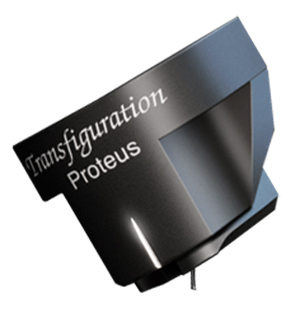
Transfiguration Proteus $6000 HERE
Now in my 14th year of vinyl nirvana, I started collecting back in 2002, many a cartridge system has come and gone. To wit, while some were truly great, others took on dubious reference status by way of what I label the "press created media frenzy phenomenon". Much like politicians adored and built up by the press, espoused with ethereal oratory skills, these cartridges fell flat when auditioned by yours truly. Transfiguration of course, is very different: their heritage alone is worth its weight in cartridge gold—utilizing the finest Japanese in house skills, Transfiguration's models have stood the test of time. Proteus exudes all the qualities you'd expect from a top line cartridge: delicacy, transparency, dynamic resolve and fidelity are all hallmarks of great sounding cartridges—add musicality, a dash of warmth and tone and DK has a new favorite to tap to. Mounted on the Kuzma 4Point, Proteus delivers sonic spectaculars that play well with any kind of musical genre. Cue up Dean Martin's Dream with Dean for example (Acoustic Sounds) and be in the studio with Dino. What else could you possibly be asking for? A+++++

Nordost Valhalla 2 HERE
Nordost continues its leadership in high end audio cable design—no, that's not a press release, that's the opening line to my PF writer's choice award. Truth is that Nordost not only created much of what today's high end audio cable industry has become, quite frankly, they piloted the ship along the way for quite some time as well, successfully to boot! Not merely content with advancing the state of the art in cable design, they also ventured into vibration absorption and AC line noise suppression technology. Having had a chance to first "play" with Tyr 2 some years ago, I spent the better part of this year smitten with Valhalla 2. The full loom of power cables, interconnects and speaker cables have left an impression not easily gained by yours truly. The image density, resolution, micro and macro dynamic swings, not to mention slam and tone are spot on and easily heard compared to my other reference cable looms. In my review, I touched on Valhalla 2s shear enormous bandwidth, simply not to be believed. Any and all changes upstream are identified with ease, yet, if you thought this sort of hyper resolution would come at the cost of musicality, you'd simply be wrong. A game changing cable design which plays well with any component and musical category and his here to stay. Stunning to say the least! A+++++
Sasha Matson
Music Matters Jazz 33rpm LP Blue Note series. $39.95 per single album
I would like to start my 2015 Positive Feedback Writers' Choice selections on the software side of the street—or what used to be called MUSIC. Sometimes you need to just get in line and sing with the rest of the chorus. I want to highlight what many have already written about—the current series of 33rpm LP remasterings by Music Matters Jazz Ltd of the core of the Blue Note catalog. These reissues are some of the very best sounding recordings of any music, in any genre, in any format, that I have ever heard! I eagerly await each pair of records-of-the every-other month-club as they are rolled out. Music Matters Jazz is an A-list project on every level, led by partners Ron Rambach and Joe Harley, with mastering engineer Kevin Gray, jazz expert Michael Cuscuna, and others. Everything is absolutely top-drawer, starting with the sound. All the sonic aspects of the famous mostly Rudy Van Gelder-engineered sessions are beautifully brought to life; the oomph of the drum sets, the left-right definition of the horns, the foundation of the bass- even the timbre of the pianos which sometimes seems the weak link in earlier Blue Note releases. There is also extra-fine attention paid to the gatefold packaging that accompanies each album with a selection of beautifully reproduced black and white photographs from the original sessions.
Building on experience gained from the standard-setting JVC-XRCD label, Joe Harley and the team are paying close attention to every step in the process, from working with the original master tapes right through the manufacturing. I was told there is one particular record-pressing machine they like to use, and that Kevin Gray went through his mastering chain once more with the latest cabling from AudioQuest and other hardware updates. As Harley told me: "the results are so easy to hear." The quality of these new Blue Note pressings is immediately obvious, flat as pancakes and quiet as the tomb. Until the music starts! I have only experienced a single flaw, for which I was sent a replacement copy right away. Music Matters had preceded their current 33rpm set with 45rpm pressings that are also highly regarded. I guess I fit into the target audience for the 33rpm versions, as I like listening to the original album sequencing, along with not having to flip LP's so often. Offering 33rpm LP's also helps reduce retail costs. The series can be purchased directly from the Music Matters Jazz website, www.musicimattersjazz.com
AudioQuest Nighthawk Open Ear Headphones $599
As the Poet says: "You should be made to wear earphones." There's something happening here all right, and I think I do know what it is. The current explosion in the quantity and quality of headphones, headphone amplifiers, and everything related to heads, is changing up the high-end playing field. At the recent Rocky Mountain Audio Fest, the 'Can Jam' portion expanded to two large areas to keep up with demand and interest. As for old dogs learning new tricks, I hadn't been listening to quality music reproduction via headphones for some years now; I exclude from the 'quality' category employing cheap ear-bud things when flying or on the train to drown out my fellow passengers and their cell phones. It's war out there! Two factors came together recently to bring me up-to-date; the logistical appropriateness of utilizing headphones in a New York City apartment so as not to be the one bugging my neighbors, and my experience with the Nighthawk Open Ear Headphones from AudioQuest. It was a long rollout on the Nighthawks; production delays in part due to the new materials being employed, like the 'liquid wood' that form the earcups. There is a whole bunch of innovative design going on with the Nighthawks. A partial list includes: a patent-pending suspension system, two sets of included detachable AudioQuest cabling, 'biocellulose pistonic diaphragms', a 'split-gap motor', 'balanced equitangential airflow'—is your mouth full yet? In other words, designer Skylar Gray and the AudioQuest team are right there pushing the envelope. I refer you to the AudioQuest website for more extensive notes: www.audioquest.com
I enjoyed the experience of listening to music with the Nighthawks so much, that I bought pairs for my sons Peter and James. There was a catch though- in exchange they both had to give me a short written review. Over to James, age 24:
"To speak about the headphones from a millennial perspective…the esthetic of the physical object is quite impressive in both style and comfort…sound quality an obvious and bounding leap forward from my little white earbuds…I used a very contemporary hip hop R&B song called "White Iverson" by Post Malone (you won't like it)…The genre is known as "sad rap" and the sound produced while listening in the headphones was 'swaggin' …The effect that is produced is being able to enjoy a completely new and improved experience. Hearing different instruments and segments of a piece more clearly displayed really can bring out exciting elements of a song you think you know well."
And Peter Matson, age 28, wrote this pithy critique:
"From the perspective of a 20 something music guy active on the scene that appreciates high end but has no room or budget for extensive hi fi setups…One thing that jumped out at me immediately is how comfortable the AudioQuests are. Multiple friends of mine that tried them commented on that as well…Sonically I appreciated the wide stereo image these phones were able to produce…and the Nighthawks did not flinch when it came to handling a large synth or drum machine generated bass blast in a tune…The overall sonic character to my ears was relatively warm and provided a nice sense of glue…very natural."
Two new audio critics are born! I won't even try to top that- it would be too Freudian. I do think the current boom in headphone-based listening, that brings high-quality music reproduction within the budgetary reach of young people, is going to yield great long-term benefits to the world of audiophile music re-creation. You can't put that horse back in the barn. Swaggin' AudioQuest!
VTL MB-185 Series III Balanced Signature Amplifier $17,500 pair
I heard a large variety of gear this year, having attended both T.H.E. Show Newport, actually located now in Irvine, and RMAF in Denver. Mentally rewinding all that now, and searching for common denominators between this year's models and previous encounters, certain touchstones emerge. You can tell a lot about high-end manufacturers by the company they keep. People who design and produce high-quality audio products obviously want to partner with other products that will make them sound great in a show setting. In other words, it is not a random coincidence that several of the systems I have connected with most positively over time at varied venues contained electronics from VTL Amplifiers Inc. I admire audio companies with real track records, as Luke Manley has been creating since 1987 with Vacuum Tube Logic. The company name says it all. VTL's focus has been on creating very high-quality tube-based amplification gear from the get-go, with those designs refined over time.
At the 2015 RMAF I spent some time with the VTL MB-185 Series III Balanced Signature Amplifier. These hefty looking monoblocks put out 140wpc in triode mode, or 300wpc in tetrode, into 5 ohm loads. That is a lot of great tube juice, capable of driving loudspeakers with aplomb, even the tough customers load-wise. And the VTL's do this with a S/N ratio of -90dB. One of the updates in the current model is the utilization of EL34 tubes, 8 per channel. In my experience this tube type delivers a punchy and strong sound, almost 'poppin' if you will. And this is in line with one of VTL's design goals, as stated clearly on their website—power. These are not your aunties little flea-circus monoblocks, but some Big Dog units that brought the Wilson loudspeakers I heard them driving to heel. They can bark, but they can also purr- I heard the most minute and delicate textures, as well as white-hot fireworks, depending on the music. In the RMAF room the VTLMB-185's were partnered with their VTL preamplifier siblings- the VTL TP-6.5 Signature Phonostage ($12,000), and the VTL TL-6.5 Series II Signature Linestage preamplifier ($15,000). This is not meant as a full-scale review, so I refer readers to the VTL website for more detailed information: http://www.vtl.com
Bob Neill
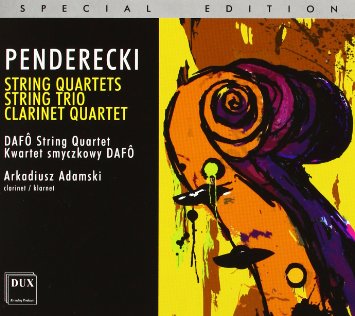
Penderecki. String Quartets, String Trio, Clarinet Quartet. Dafô String Quartet. Arkadiusz Adamski, clarinet. Dux 0770.
I doubt there is a note of Krzysztof Penderecki that hasn't moved me at some time or another — but his Clarinet Quartet (1993) moves me more than most. It bursts upon us unexpected. This work never ceases to take my breath away, leaving me conveniently speechless here. The single movement String Quartet No. 3 (2008) which follows it and concludes the program is its equal in eloquence and power but is stylistically more complex. Penderecki comes from Stravinsky who likely made him possible; but he goes places Stravinsky could not (or would not let himself) imagine. Quartet No. 3 is one of the great quartets in the literature. This album is part of the Polish label Dux's ongoing series of the composer's music. Get to it.
Bartok. Sonatas for Violin Nos. 1 and 2; Sonata for Solo Violin. Barnabás Kelemen, violin; Zoltán Kocsis, piano. Hungaroton HSACD 32515. SACD.
Arguably, Bartok is the first major modernist who forced us to accept that you couldn't just sidle or waltz into modernism from late nineteenth century romanticism. There was a bridge to be crossed into another country. Now most of us both accept this observation and inhabit the country of Bartok. But violinist Barnabás Kelemen and better known Bartok pianist Zoltán Kocsis aim to make it clear that the composer is still who and what he always was. Bartok drew his inspiration from the folk music of his native culture but the music he wrote soars far beyond its roots, becoming a radically different kind of thing. It is exhilaratingly, sometimes searingly a new musical thing. And you won't appreciate this until and unless you hear it from musicians like this.

Alfred Schnittke. Sonatas for Cello and Piano Nos. 1 and 2. Trio for Piano, violin, and piano. Irina Schnittke, piano. Olga Dowbusch-Lubotsky, cello. Mark Lubotsky, violin. NCA 234042.
The world seems just now to be catching up with Russian modernist Alfred Schnittke (1934-1998). Nearly 20 years since his death we hear the large, complex, passionate personality somehow inaccessible before. To my ears he sounds like a son of Benjamin Britten in his Sonata for Cello and Piano No. 1 (1978). It is some of the most moving music for cello I know of. The Sonata No. 2 (1993/1994), composed nearly twenty years later, feels like a larger work and asks a good deal more of the cello. This music has moved on from Britten into more… existential territory. It suggests that larger questions are being asked and more forthrightly. This is the difficult Schnittke we ignored for so long and so foolishly.
With the composer's Trio for Piano, Violin, and Cello (1985/1992), we are, though elusively, in more traditional territory: a sophisticated modernist treatment of traditional material. It is as if we are hearing Schubert and Mahler through modernist ears. This is the sort of thing—reinterpretive, slanted perspectives—that Schnittke is most noted for. In its engagement with the music of the past, i t shares some of the quality of Ives' games with American popular and folk songs; but it is less playful, more uncomfortably dreamlike. Schnittke is remembering music but remembering it out of phase. Ives possesses the music he plays with; Schnittke is possessed by it. If we let ourselves, we are mesmerized by his tribulations. It is a strangely haunting piece of music as it was clearly intended to be. Wonderful music, superb musicianship. And yes, the pianist is the composer's widow.
Brian Moura
Merging Technologies NADAC MC-8 DAC $11,500 HERE
Merging Technologies is best known for its line of professional Analog to Digital (ADC) and Digital to Analog (DAC) converters for use in recording studios, music venues and TV and radio production in DSD, DXD and PCM digital formats. This year Merging brought their technology to the home audio market with the Network Attached Digital to Analog Converter (NADAC).
Available in two models—Stereo (ST-2) and Multichannel (MC-8), NADAC is unique on several fronts. It uses Ethernet as its input format, not the much more common USB. This includes support for the Ravenna protocol that Merging helped develop for music recording. It also allows buyers of the MC-8 multichannel model to flip a switch and merge the 8 DAC channels into 2—bringing you the features of the ST-2 and MC-8 converter in one box
Even though it was released fairly recently (late September 2015), NADAC has already received a number of kudos and rave reviews at audio shows where it has been auditioned. It's for good reason. NADAC offers a clean and very detailed portrayal of the music it is playing—be it DSD, DXD or PCM. The clean and detailed sonics are essential for judging a musical performance in the recording studio and presenting it at a concert hall, club or professional venue. It is just as important in the home audio market where NADAC is very likely to receive a warm round of applause and strong sales. Bravo!
Merging Technologies NADAC MC-8 Meets Multichannel
The Show Newport 2015 DSD Panel
8 Ensembles in 1 Bit
Initially DSD 256 (also known as Quad DSD) was used as a technology to record music that would be later released in the more commonly supported DSD 64 and DSD 128 formats. With the emergence of home audio DACs with DSD 256 in Stereo and Multichannel from vendors led by exaSound in Canada, things changed and there was interest in and demand for DSD 256 releases.
One of the first companies to address this demand was the team at Native DSD. They recruited 8 talented young music ensembles in Europe (Breno Viricimo Group, De Gebroeders Harteveld and Fretz, Kobra Ensemble, New Amsterdam Voices, Odd Pearls, Thomas and Eva, Vercammen and Roinishvilli and The Pipays) to record an album.
What makes 8 Ensembles in 1 Bit unique is that it was recorded natively, without post-processing, in DSD 256. This meant, for example, that the recording team had to physically move the musicians to bring them into balance vs. doing this with recording gear. The 26-minute video 8 Ensembles in 1 Bit: Behind The Scenes with album Co-Producers and Recording Engineers Jared Sacks (Channel Classics) and Daan van Aalst (Navis Classics) provides a fascinating insider's look into the recording of this album and how it differs from standard recordings.
The result is an album featuring a wide variety of musical styles including Jazz, Acoustic, Bossa Nova, Classical and Vocal. The ensemble members found that the clarity and dynamic range of the DSD 256 format allowed them to perform music in its full bandwidth and provided startling clarity. As Lampizator's Lukasz Fikas remarked after hearing the album through his company's DACs "If you ever wondered, this is how the most amazing quality DSD gets done." Truly a showcase for music in DSD 256.
8 Ensembles in 1 Bit: Behind The Scenes (Video)
Just Listen Record Lable $14.95 (Stereo) to $19.65 (Stereo + Multichannel DSD "Combi Deal")
Bob Attiyeh, Yarlung Artists HERE
Bob Attiyeh is one of the largely unsung heroes in the world of very high quality music and audio. This year he celebrates the 10th Anniversary of his music company Yarlung Artists. Yarlung is a 501(c)(3) non-profit that records and releases music from young and very promising musicians in the highest audio quality. This includes Analog Tape, Vinyl LP and most recently Music Downloads. The result is some of the best sounding recordings on the market, not to mention an amazing calling card for these young musicians just starting their career.
Attiyeh records Live to Analog Tape using a specially modified tape recorder. The music is then mastered with the assistance of Mastering Engineer Steve Hoffman. This year Attiyeh expanded his company's offerings with the release of 20 albums that were transferred from the album Analog Master Tapes to the DSD 256 format. Almost overnight, with Attiyeh's work, DSD 256 went from a recording studio tool and upsampling option for home audio to a real live release format.
Attiyeh credits his bold entre into the world of DSD and more specifically DSD 256 to Positive Feedback Editor in Chief David Robinson, who loaned him a Merging Technologies HAPI converter to make these transfers. Attiyeh also credited assistance from Native DSD Mastering Engineer Tom Caulfield in making this tape to DSD project a reality. Today, Yarlung continues to have more DSD 256 albums transferred from Analog Tape on the market than any other record label.
Having heard a number of the Yarlung DSD 256 releases, I can attest to the very high quality of these Classical and Jazz recordings. For his tireless work to advance the audio state of the art and his work in helping shine a light on the talented young musicians starting out today, Bob Attiyeh is very deserving of the Writer's Choice Award.
The Show Newport 2015 DSD Panel
Myles B. Astor
Doshi V3.0 Phonostage $15,000
Designer Nick Doshi's recently released two-piece Doshi Audio V3.0 phono stage represents in his words, "an evolution in thinking," and a complete reworking from top-to-bottom and inside-to-outside of his earlier and highly acclaimed design. The latest V3.0 version of the Doshi Audio phono stage employs a totally different and completely new circuit design (including a different tube selection) in addition to a separate, 20lb. bipolar power supply, a significant reduction in the moving coil section's noise floor (to over 100 dB) and the output impedance of the unit, better RIAA tracking under dynamic conditions, etc. However, it's also the little things that stand out about this unit such as the dual, remote controlled, adjustable cartridge loading (and switchable between the two preset values) and absolute phase selection. These design changes and their sonic effects are far from subtle and elevate an already outstanding phono section to new sonic heights.
The newest Doshi V3.0 phono section possesses unprecedented quietness, resolution, dynamics and low frequency extension. Doshi's latest new stock tube selection (2 x Tungsol 12AT7, 2 x Svetlana 12AX7, 2 x JJ ECC832/12DW7) adds another half star to the phonostage's performance and changes the phono section's character from an ever-so-slight yangish to yingish presentation. The newest tube selection also markedly improves the solidity of the center image, the sense of the recording space and most of all the ability to unravel densely orchestrated rock music such as Human League's 45 rpm extended dance remix of "Don't You Want Me." Add in Transparent Audio's brand new differentially balanced, Gen. 5 phono cables that Doshi co-designed with Josh Clark of Transparent Audio for an even further decrease in both the unit's noise floor and increase in dynamic contrasts.
The Tape Project Garcia-Grisman, TTP#027 $450
Garcia-Grisman is along with Bill Evans' Sunday at the Village Vanguard, Arnold Overtures, and Bruch's Scottish Fantasies, one of the absolute best 15 ips reel-to-reel tape releases to date and a must-have for any self-respecting tapehead. Despite being an all analog recording done in 1991 at Grisman's then new Dawg Studios, the simply named Garcia-Grisman was only available on CD until MOFI chose to release it last year on vinyl. (Those without access to a tape machine should search out the MOFI LP release from a year ago.) And since Garcia-Grisman was intended for digital release, each reel is jam packed with 30 minutes of music featuring the long time quartet of Garcia, Grisman and band mates Joe Craven and Jim Kerwin.
This all-acoustic recording would be worth the price of admission if the only track on this tape was the 16-minute jam session entitled "Arabia." However, there's more, oh so much more to this recording. Garcia-Grisman is a very distinctive mix of eclectic musical styles and tastes including among the nine songs on this two reel set BB King's soul song "The Thrill is Gone," a unique arrangement of the Grateful Dead anthem "Friend of the Devil" and an original composition by Grisman entitled "Dawg's Waltz" (Garcia gave Grisman the nickname Dawg). Moreover, the sound here is spectacularly natural and wait until you heard the tone and vibrancy of Grisman's mandolin!
MG Audio Design Reference Series Planus IV (Copper) speaker cables $200/ft. 6 ft length $2400
The MG Audio speaker cables are proof positive that audiophiles need not break the bank to get great sounding speaker cables. These extremely thin and 4-inch wide ribbon foil speaker cables from the duo of Lee Matuszczak and Greg Graff are extremely musical and well balanced performers with no one area acting to the detriment of the other. Transparency, soundstaging, immediacy and just all around naturalness are the hallmarks of this speaker cable. These cables were with the best analog source material fully capable of totally immersing the listener in the music. Where the MG Audio speaker cables really stood out, however, in my reference system lay in their ability to decipher and unravel the subtle low frequency rhythmic changes of double basses and cellos. Just as spectacularly rendered was the rendering of an instrument radiating in space as well as the very spooky feeling when a bow was drawn across the strings. Though shipped "broken-in," the MG Audio requires at least another 100 hours or so of playing to settle in. Oh and one word of warning. These flat foil cables are a little more fragile than their compatriots and don't appreciate being stepped on.
Robert S. Youman
Synergistic Research Atmosphere Level 4 Interconnects & Speaker Cable HERE
1 Meter XLR Interconnects $3095
1 Meter RCA Interconnects $2495
8 Foot Speaker Cables w/Spades $4995
The latest family of wire products from Synergistic Research utilizes an innovative design approach through its unique ground plane tuning implementation. Nothing new for Synergistic Research—just another example of their commitment to think out of the box and explore new technologies. This includes the Atmosphere Level 1 through 4 Interconnects and Speaker Cable that hit the market earlier this year.
The Atmosphere Level 4 was a real eye opener. The Synergistic Research CTS Element has been an important benchmark and "go to" wire for me over the past two years. Substituting the Atmosphere Level 4 for the CTS Element was a considerable step up in sound performance. I was surprised by the results as the price points of the Atmosphere series is appreciably less than that of the Element series.
Without losing any of the speed and transparency of the CTS Element, The Atmosphere Level 4 adds a certain amount of harmonics and roundness to the sound that was very appealing. I heard more weight and slam on the low end and additional sweetness on the highs. Mids were lush and romantic without losing the proper texture and inner detail of the very best recordings.
To my ears, we now have a new gold standard in this price range and significantly beyond. There are several flagship cables at two to three times the MSRP that have been left in their tracks. Better sound for less money from the same manufacturer? Very impressive!
Pass Laboratories INT-60 Integrated Amplifier $9000 HERE
With the INT-60 Integrated Amplifier, Pass Labs continues to surprise me by exceeding all expectations. As I have said in the past, there is no better brand out there for design innovation, military spec like build quality and outstanding sound performance. I should know by now to expect the unexpected from Nelson Pass and Wayne Colburn.
The INT-60 is a Class A/B design rated at 60 watts into 8 ohms and doubles into 4 ohms at 120 watts. It leaves class A into class A/B at a peak of 30 watts. This combination of Class A and Class A/B output was selected to provide a broader range of options and efficiency for a variety of speaker loads. Damping factor is 150. The INT-60 weighs a whopping 93lbs. Overall dimensions are 19 x 21.2 x 7.6 inches.
The INT-60 provides a wonderful combination of fleshed out detail and dynamic flair. The overall tone of the INT-60 is slightly if not just a sliver on the warm side, but I found the word "neutral" coming up time and time again in my listening notes. There was a life like presence to the highs that provided a nice balance of proper speed and dimensionality. Bass was tight and physical with plenty of punch and authority.
Micro and macro dynamics were as good as some of the best I have heard in my listening room. Sound stage width and depth was all there with plenty of layering and pint point imaging. The noise floor retreats back into a deep black cushion of quiet. Bottom line—I was swept away by the sonic beauty and boldness of the presentation.
Again, it would be easy to say that the new INT-60 Integrated Amplifier is just another magnificent design in the tradition of so many others from this company. That would be a mistake and would not do the INT-60 the justice that it so well deserves. In this price range, we now have a new reference that will have both separate and integrated components from other manufacturers scrambling for their life line.
Jim Merod
Hi-Fi One's state-of-the-art "preamplifier" (Steve McCormack's standard model)
Andreas Koch's "Playback Designs" integrated amp / DSD-enabled exotic machine
Merging Tech's HORUS/HAPI 'beyond boundaries' Quad-DSD recording system (with Pyramix)
Gary Beard
Pass Labs XA30.8 Class A Amplifier $6800 HERE
I don't give out many Writers' Choice selections, but after a month on the rack it was clear; the Pass XA30.8 is a must to receive such an award. The XA 30.8 is a beastly 30 watt Class A solid-state amplifier with a deft touch that even a tube nut like me can love wholeheartedly. Power, finesse, and terrific staging—the XA30.8 is the real deal. I can't recommend it highly enough.
Jeff Day
It's always an exciting time of year when the Positive Feedback Writer's Choice Awards roll around, as it provides a time to reflect back on the past year and think about its highlights.
This past year has had so many highlights it boggles my mind as I think back on it, and I'm so thankful that I was able to share all my audio & musical discoveries with you here in the pages of Positive Feedback.
First there was The Vintage McIntosh Experience article about the vintage McIntosh valve quartet of the MX110 tuner-preamplifier the MC240 stereo amplifier, the MC225 stereo amplifier, and the MC30 monaural amplifiers, from the vintage McIntosh specialists Tom Manley & Terry DeWick at McIntosh Home Audio & DeWick Repairs, and Yves Beauvais at Vintage Vacuum Audio, that I wrote about in Issue 77 to kick off the start of the New Year.
Then in Issue 78 I told you about the SPEC RSA-M3 EX Real Sound Amplifier from the remarkable Mr. Shirokazu Yazaki, that can go toe-to-toe musically & sonically with the best direct heated single triode amplifiers, but has much more power, and the simplicity and reliability of a solid state integrated amplifier.
In Issue 79 I covered my latest turntable project for you, the international collaboration that produced the stunning nuevo-vintage Garrard Project 2015, with its very hot-rodded Classic Turntable Company version of a Garrard 301 idler-wheel turntable from the UK, a stunning statement plinth by the USA's Artisan Fidelity, and the impeccable 'made in Germany' 12-inch Thomas Schick tonearms, mounted with Danish mono & stereo Ortofon SPU phono cartridges.
Then in Issue 81, in the Adventures in Real Sound with Mr. Shirokazu Yazaki, I told you how to get Real and release the musicality hidden inside your hi-fi system with do-it-yourself (DIY) projects using vintage Western Electric WE16GA wire as speaker cables, nuevo-vintage Belden 8402 microphone cable as interconnects, nuevo-vintage Arizona Capacitors (nee West-Cap), SPEC ruby mica capacitors, and other audio Golden Age treasures.
The challenging part of the Positive Feedback Writers' Choice Awards is narrowing down all those stellar audio & musical moments from a full year of audio adventures into the 1 to 3 awards per audio writer that Ye Olde Editors Dave & David request. It's agonizing, because every single thing I wrote about for you in 2015 deserves an award of its own!
For 2015, those three that stand upon the top steps of the winners' podium are the SPEC RSA-M3 EX Real Sound Amplifier, the Garrard Project 2015, and Mr. Shirokazu Yazaki.
The SPEC RSA-M3 EX Real Sound Amplifier $9500 USD HERE
The beautifully built, artisanal work of passion, SPEC RSA-M3 EX Real Sound Amplifier was a real eye opener for me this year. In the review I said, "I think that what we are witnessing here with the SPEC RSA-M3 EX Real Sound Amplifier may very well be the birth of something as musically significant as what happened with the advent of the DH-SET amplifier renaissance in 1960s Japan, but this time it is with a class-D amplification device from the 'enlightened ear' of Mr. Shirokazu Yazaki."
The superb tone color and rich timbral textures that are normally the purview of fine vacuum tube designs are now present is this class-D amplifier from Mr. Shirokazu Yazaki. If you're interested in an amplifier with the beauty, tone color, timbral naturalness, and rich stereoscopic musicality of the best vacuum tube designs in a non-fussy and classy solid-state design, I suggest that you listen to the SPEC RSA-M3 EX amplifier.
You may very well decide for yourself that it is one of the best amplifiers out there regardless of price. At least that's my take on the SPEC, and I suspect it'll be yours too if you get a chance to give it a listen.
The Garrard Project 2015 $12,285 USD HERE
As many of you know, I've had 'a thing' for Garrard 301 based turntables going back a long time. Starting in 2004, I wrote a series of articles for Six Moons about my first Garrard Project player system. In that first Garrard Project my plan was to keep it simple and as low cost as I could, to match my budget at the time.
Fast forward to 2015: My goal was a little more ambitious for my latest Garrard project, the Garrard Project 2015.
This time I wanted to build a hot-rod Garrard 301 based player system that could pretty much go toe-to-toe with Garrard 301 'super-tables' like the Shindo Garrard 301 player system, or the Artisan Fidelity Garrard 301 Statement player system, perhaps the two most notable examples of the vintage-based Garrard 'super-table' genre.
But here's the kicker: I wanted to knock on the door of those vintage-based Garrard super-table's performance, but I wanted to do it for about half their price.
To accomplish that goal I recruited Garrard specialist Ray Clark of Classic Turntable Company, bespoke analog maven Christopher Thornton of Artisan Fidelity, and tonearm craftsman Thomas Schick.
To make short work of a long article, I succeeded. Spectacularly! The resulting hot-rod Garrard Project 2015 player system had stunning tangible presence, timbral realism, vivid tonal colors, and such strong emotional impact that it was truly awe inspiring, and riveting to listen to.
Price-wise I accomplished my goal, coming in at $12,285 USD, which breaks out to $4345 USD for Classic 301 turntable with optional brass platter, $5340 for the Artisan Fidelity Garrard 301 Statement Plinth with optional Stillpoints Ultra SS footers, and $1300 USD times two for the superb Thomas Schick tonearms.
The resulting Garrard Project 2015 turned out better than I could have ever imagined, and I am absolutely thrilled by both its beauty and performance.
So my Writers' Choice Award for the Garrard Project 2015 goes to the world-class team of Ray Clark, Christopher Thornton, and Thomas Schick for making my Garrard dreams come true!
Mr. Shirokazu Yazaki (priceless!)
This is the first time I've ever given a Writer's Choice Award to a person instead of an audio product.
Mr. Shirokazu Yazaki of SPEC Corporation has completely astounded me with his knowledge, experience, and passion for all things audio.
Yazaki-san's deep insights into those elements that make audio come alive with what he calls Real Sound has been demonstrated before my eyes & ears and I am awestruck.
Yazaki-san has the audio 'Midas touch' and is able to turn anything he focuses his attention on into audio & musical gold, and to top it off, he freely & openly shares his knowledge and way of doing things with those who ask.
My Adventures in Real Sound with Yazaki-san have refreshed & resurrected my passion for audio, my eyes have been opened to what is possible with careful voicing using select components.
Like an artist painting with an intensity of color, texture, and images, to create a stunning work of art, Yazaki-san paints with a stimulating emotional intensity of color, texture, and tone through the medium of Belden 8402 microphone cable, vintage Western Electric WE16GA wire, Arizona Capacitors (nee West-Cap), SPEC Ruby Mica capacitors, historic Brown Devil resistors & Mallory capacitors, Tepro RA resistors, Vishay Sprague wet tantalum capacitors, and an artful selection of vacuum tubes that possess the 'lofty British fineness of tone'.
Whether it is his SPEC RSA-M3 EX Real Sound Amplifier, or the custom directly heated triode amplifiers he has made for his friends, or his many gracious recommendations to all of us to help us achieve Real Sound in our own systems, you Mr. Shirokazu Yazaki are an audio cultural treasure we are blessed to have among us!
Consider my Writers' Choice Award to Mr. Shirokazu Yazaki to be the audio equivalent of a Nobel Prize in the audio arts. Well done, Sir!
Scott Robertson
Magnepan 3.7i HERE
I loved my Magnepan 3.7 speakers, but the 3.7i upgrade provided an improvement in spatial resolution, bass response, and sonic integration of that wonderful full-length ribbon tweeter with the rest of the thin membrane planar speaker. The 'i' upgrade is available to any Magnepan 3.7 owner, and raises the bar for Magnepan's solid reputation of providing outstanding audio value for the dollar. As with the 3.7, the 3.7i is highly revealing concerning amplification, source, and cabling. When matched with an appropriate high-end system, it is hard to beat the Magnepan 3.7i for musical detail and soundstage at anywhere near its price point.
When the 3.7i is placed at least four feet from the back wall, the sound stage is open and spacious. Vocals hang in the air, and the large panels simply disappear (at least until you open your eyes!). This is the kind of sound that makes people stop and look when they hear it—sound that is so engrossing you can't help but pause to take it in.
If you are looking for an excellent match for amplifier and pre-amp, I heartily recommend the ModWright Instruments KWA 150 Signature Edition Amplifier and LS 100 preamplifier. These high quality components provide ample current for satisfying bass response from the 3.7i, while keeping it well controlled for amazing resolution. A slam-dunk winner!
Andy Schaub
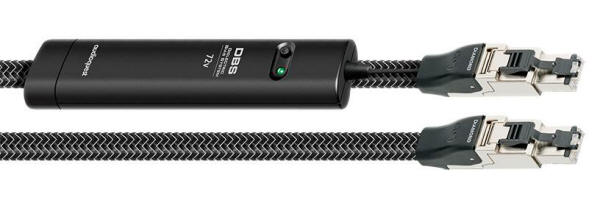
AudioQuest Diamond Ethernet Cables HERE
I actually liked the AudioQuest Diamond Ethernet cables so much that I bought the review pair, one 1.5 meter and 5.0 meter. I still use them even though I have moved, both between my cable modem and my Apple Airport Extreme and between my Airport Extreme and an older Airport Extreme to extend my network and act like a hub, connecting three streaming devices (two video and one audio) via the much less expensive but still exceptional AudioQuest Forest Ethernet cables. I even use one of the Forests between an Airport Express and my Magnum Dynalab MD-807T, offering truly superlative results over the built in Wi-Fi module for the MD-807T (but still wireless via the Airport Express). I couldn't have more positive things to say about the AudioQuest Ethernet cables. I may even get a long Vodka one to go between my main Airport Express and my Canon iPF5100 photo printer. They're really that good.
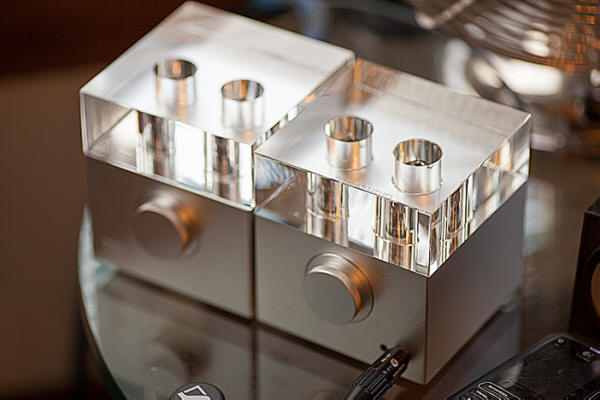
Woo WA7/WA7tp HERE
I don't have my Woo WA7/WA7tp anymore because, when I moved, there really just wasn't any place to put it and they won't let me leave the pair at work. So I may turn to a 128GB iPhone 6S and the Onkyo Music Player App along with a Chord Mojo. However, I really love the WA7/WA7tp combination and the WA7tp is really what makes it truly shine. Having that tube power supply opens up the sound of the WA7 tremendously, giving me an extraordinarily wide and deep soundstage with my modified AKG K701s, not to mention very deep bass and and sweet, extended treble. The WA7 may look sleeker by itself with the already extremely good solid state power supply using a torodial transformer. However, it's when you add that WA7tp that you start knocking on the door of my Ayre QB-9 DSD/Tri TRV-84HD combination, and that's saying something!
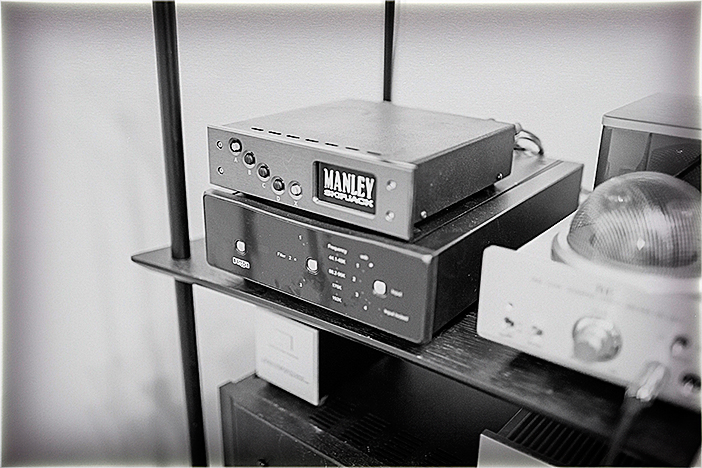
Rega DAC-R $1100 HERE
How can you not love Rega? My first real turntable was a Rega Planar 2 with a Linn K9 cartridge, both audiophile classics, and although Rega no longer carries some of the esoteric caché that once did, partly because they dispensed with the really cool looking smoked acrylic dust covers that once adorned their turntables, they still make damn fine musical sound audio components from the front end to the speakers. I remember the first Rega DAC came out and I used it to replace my dCS Debussy. Well, things make have changed and I think that that Ayre QB-9 DSD really hits the magic spot between price and performance, but the DAC-R comes much closer than you would expect for a mere $1100 and has a 24/192 PCM USB input now as well as multiple S/PDIF inputs including COAX and TOSLINK. A bargain DAC with high-end aspirations just like the old Planar 2/3 compared to the Linn LP-12.
Tom Gibbs
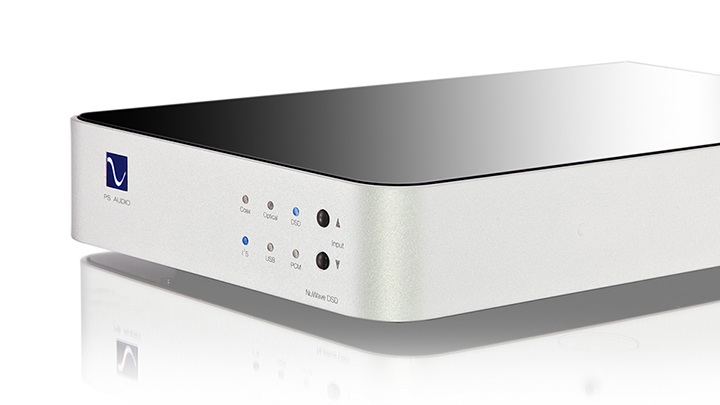
PS Audio NuWave DSD DAC $1299 HERE
When PS Audio released their flagship DirectStream DAC a little over a year ago, one of the aspects that got a tremendous amount of press was how well the unit handled Red Book CD sound, and most of the mainstream audio publications raved about the level of musicality and retrieval of detail it offered. Intrigued by this (I was in the midst of an article discussing the relevance of CD-quality files), I contacted Paul McGowan to discuss his take on the DirectStream's performance with Red Book, and asked if he foresaw any possibility of any trickle-down technology making its way into a product at a more affordable price point. He told me that they were in fact working on a successor to their current NuWave DAC that would probably sell at around the $1200 mark. While the level of technology available in the DirectStream ($5999) would simply not be possible at that entry-level price point, he insisted that the new DAC would offer exceptional playback of CD-quality files.
That new DAC arrived in August, the NuWave DSD, and in terms of their stated design goals, it's a complete success. They didn't just take the prior NuWave and retool it to include DSD capability, it's been completely rebuilt from the ground up. Everything about the unit's build just oozes quality, the fit and finish make my previous DAC seem like not much more than a sardine can by comparison. And while the unit does not convert all files to DSD like its' much more expensive sibling, it's been voiced to offer sound comparable to the DirectStream DAC at about one-quarter the MSRP ($1299). A fully balanced unit, it offers a remarkable variety of input choices, and offers up to 2x native DSD playback from both the USB and I2S connections. The unit features a massive internal power supply, and I was really impressed by it's appearance and relative heft—it weighs in at just over 20 pounds, which is pretty substantial for a half-rack format DAC. The flexibility to play native DSD files and PCM converted to DSD via a music player like JRiver Media Center makes it a compelling value for anyone looking for a reference-quality digital-to-analog converter. The NuWave DSD offers a level of sound quality with all formats that consistently blew me away; the unit's uncanny ability to extract heretofore unheard levels of detail was only surpassed by its remarkable musicality. You can check out my complete review here. Having this unit has made one thing very clear to me—my DAC was without a doubt the weakest link in my system. The NuWave DSD is the complete package and a keeper—and definitely my choice for product of the year!

AudioQuest JitterBug USB Data and Power Filter $49 HERE
I'll try just about anything within reason to get my system closer to the music. In my current setup, where digital front-end devices hold the reins with increasing frequency, I want to believe that I've done about as much as I can to improve the system's overall fidelity. Decent DAC, high-end USB cable—at the relatively modest price point that most of my equipment occupies, my go-to DAC doesn't even have a power cable, its power is derived from the USB bus. I'm pretty happy with the resolving power of my system in terms of amps, preamplifiers, speakers/subs and cables/line conditioning, etc. So there's really not too much else to do in terms of improving digital source fidelity short of a seriously expensive DAC upgrade, right?
Wrong. One of the most shockingly cost-effective upgrades I've made to my digital front end this year came with a price tag of less than $100—for a pair of AudioQuest JitterBugs. When I first heard about the JitterBug, I was pretty impressed with all the information I was seeing on the internet, but also somewhat skeptical. According to all the voices crying in the computer audio wilderness, we need power and audio line conditioning for our USB-connected devices. They're totally correct, and with a pair of JitterBugs in place in my system, the music seemed better in every imaginable way: deeper, blacker backgrounds, a more rock-solid stereo image, and a more liquid midrange—especially noticeable with female vocals. All this was through my USB-bus powered HRT Streamer HD; when my review unit of PS Audio's NuWave DSD DAC arrived, I was really curious to see how and if the JitterBugs would impact the sound of a much more expensive DAC with an onboard (and robust) power supply. No worries there—while the NuWave DSD sounded superb in comparison to the HRT unit straight out of the box, it experienced similar gains in the overall presentation of the music. It just sounded more musical, more analog with the two Jitterbugs in place. While the current state of digital music playback is pretty impressive even without the JitterBugs in the equation, at under $100 for the pair— which is truly audiophile chump change—why not enjoy a slice of the high life?
Ed Kobesky
Audio-Technica AT-LP1240-USB Turntable $530 HERE
How good can a mass-market, direct drive USB turntable really be? You'd be surprised. In some key areas, Audio-Technica's $530 AT-1240-USB competes with models costing twice as much. It has a confident, dynamic, propulsive, conspicuously detailed sound that's reasonably refined and often downright exciting, especially with the right cartridge. It's also solidly built, packed with conveniences and almost ridiculously cheap by audiophile standards. Physically bypassing the built-in phono stage is recommended (it remains in the signal path even when defeated), and upgrading the included DJ slipmat is essential. Inexpensive to buy, easy to like and genuinely good sounding. If that's not award worthy, I don't know what is.
Marshall Nack
CH Precision M1 Monaural Power Amplifier $94,750/pair
Cosmetically the new M1 Monaural Power Amplifier bears a family resemblance to every other CH Precision component. Sonically its DNA resembles its sibling, the smaller A1 amp, which I reviewed in both its stereo and mono configurations last year. The difference between them is that while the A1 resides in Reference Class, the M1 pushes every aspect of performance a little nudge upwards. And those little nudges turn out to be enough to move the A1s Reference Class sound room experience out of the realm of reproduction and make you forget that you're listening to an audio system.
With the M1s completing my CH Precision electronics lineup, I witnessed the burden of persuasion jump from the electronics and land squarely on the source, where it always resided. This gear just gets out of the way and, if I hear any bottlenecks, I won't be looking at the amps. When I play a high-quality SACD, every aspect of playback is accounted for. But if I switch to Red Book, even though it sounds better than ever, I can sense a drop in the pixel count; it is not high enough. Data is lost and continuity is compromised. The quality of the source was always important—now it is the paramount concern.
The CH Precision M1 Monoblock is certainly the best amp to grace my premises. A full review will be coming soon.
Steve Lefkowicz
This past year I heard many interesting and exciting products. Some have already been written about, other will be very soon, and some, for various reasons, won't. However, when it comes to my selections for a Writer's Choice award, it was one of the easier choices I've had in recent years.
Ampsandsound Stereo15 Special Edition Amplifier ($1800) and Secret Edition Chip Amp $600
Local Southern California builder Justin Weber runs a small company, ampsandsound, which produces a fine line of reasonably priced tube amplifiers and high efficiency horn speakers. His $1800 Stereo 15 Special Edition is one of the best sounding affordable tube amps I've ever tried. Utterly silent background levels with superb dynamics and tone. Ultralinear configuration with a pair of low cost EL84 tubes per channel, tube rectified and beautifully finished. Can be custom ordered for either 4/8 or 8/16 ohm speaker connections. Just make sure you mate it up with speakers that can be driven adequately by 15 watts. I used the amp mostly with Tekton or Fritz speakers and the sound was gorgeous in every case.
If you want low powered purity of sound, but don't want tubes, then contact Justin about his "chip amp." It doesn't show up on the web site, but he builds them to order. Not really a gain-clone, it uses an LM1875 chip with a fairly hefty power supply to put out about 25 watts. The unnamed chip amp offers stunningly good sound quality with the right speakers (perfect match for my Tekton Lores). The Chip Amp serves up clean, pure, ultra musical sound with surprisingly powerful bass capability. Match one up with a $49 Schiit Audio SYS passive volume control or a $299 Channel Islands Audio VPC•3 passive line controller and your favorite high efficiency speakers, and spend the rest of your money on new music. Budget price, but certainly not budget sound.
ELAC Debut F5 Speakers $559.98/pair
I'm giving this award after just one week of use. The review won't post for a while yet. The new ELAC line designed by Andrew Jones has been creating a lot of buzz since their debut at various shows earlier this year, and deservedly so. The floor standing F5 will simply shock discerning listeners with just how good a $559.98 pair of speakers can sound. They are possessed with tonal accuracy, extended bass response that give kick drum and electric bass guitar some real punch, and an ability to play loud and "big" enough to fill a full size room. These speakers are good enough that they have clearly shown the difference in sound characteristics between the three amplifiers I've tried with them so far. Only limitations I've discovered with my limited use so far are a need for higher power amps (70 to 100 watts minimum) and a slight loss of their overall quality when played at lower volume levels. An ideal speaker for both the beginner entering the world of high end audio and the seasoned listener who simply wants to work within a reasonable budget. More proof (as if that was actually needed) that Andrew Jones really is one the greatest speaker designers in the industry today.
Samantha Crain - Under Branch & Thorn & Tree (200 gram LP, Ramseur Records ARAM 19842)
This new release from Oklahoma native Samantha Crain has become one of my favorite albums of the last several years. This folk/blues/Americana/country/traditional singer-songwriter crafts exquisite songs with real lyrics about life's ups and downs. Her voice is a breath of fresh air compared to most current/modern vocalists.
Additionally, it is a beautiful all-analogue recording, 200 gram pressing (from QRP) and mastered by Bernie Grundman. There was serious attention paid to getting this artist's work sounding as good as the music deserves. If you have a turntable, you should get this record.




